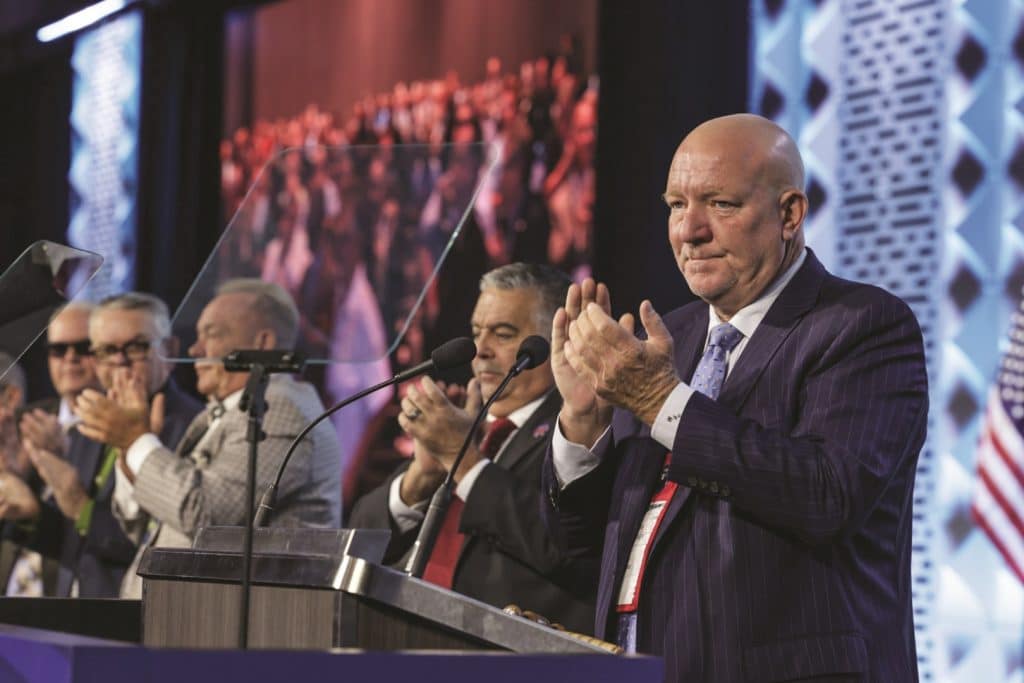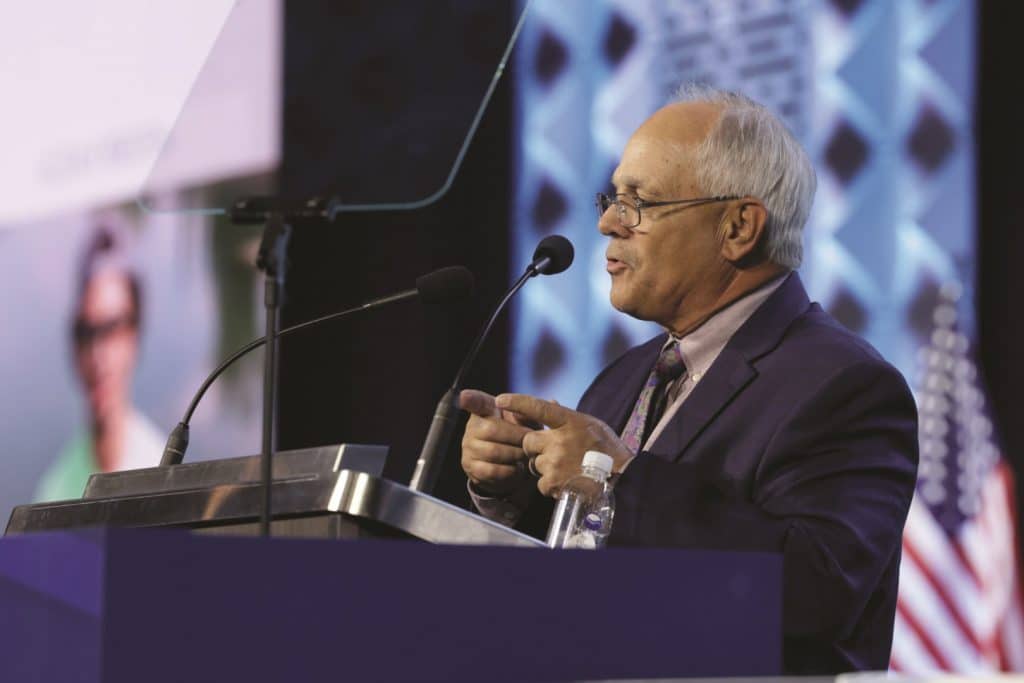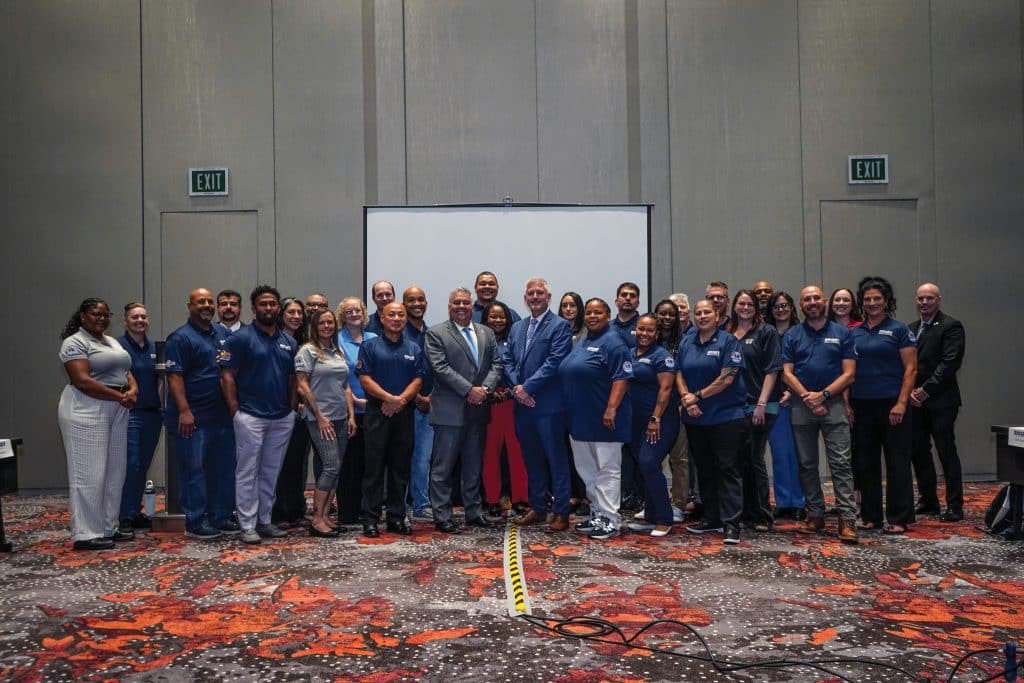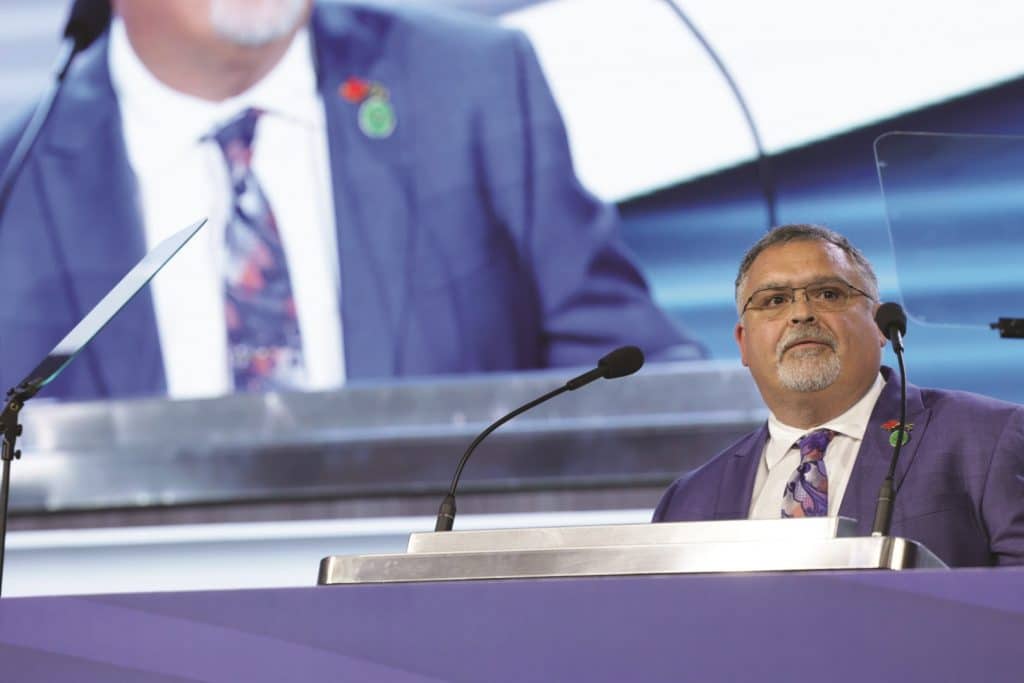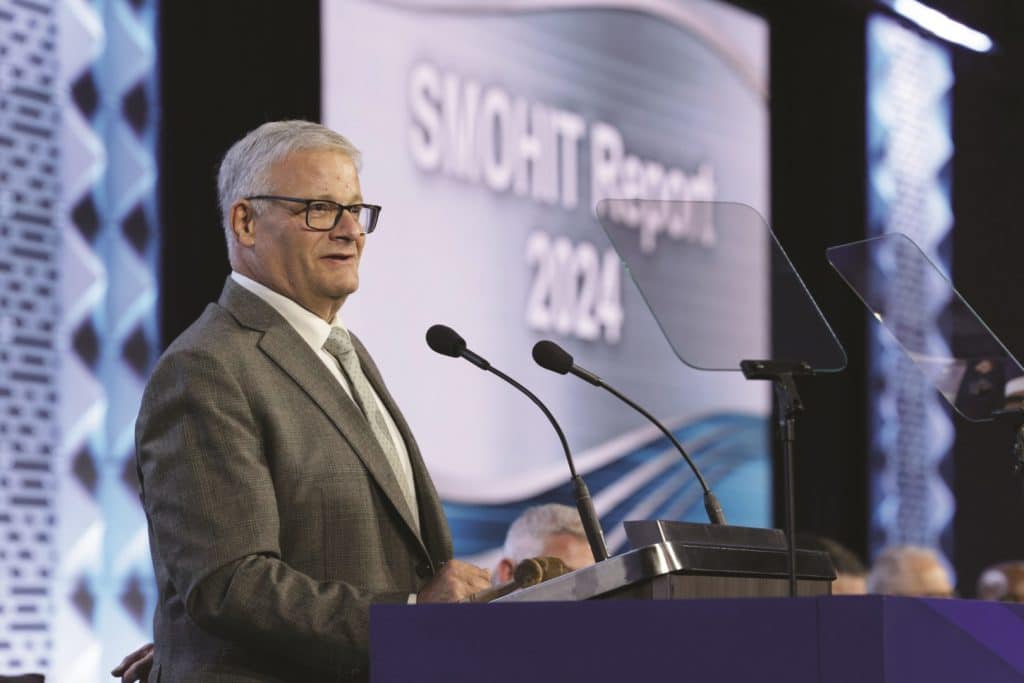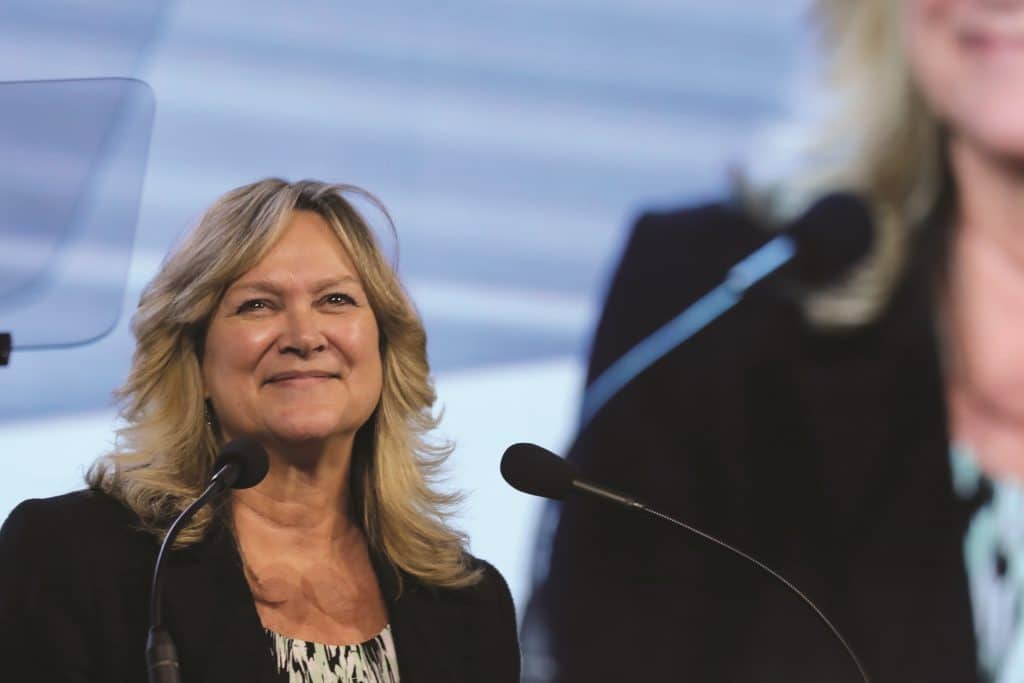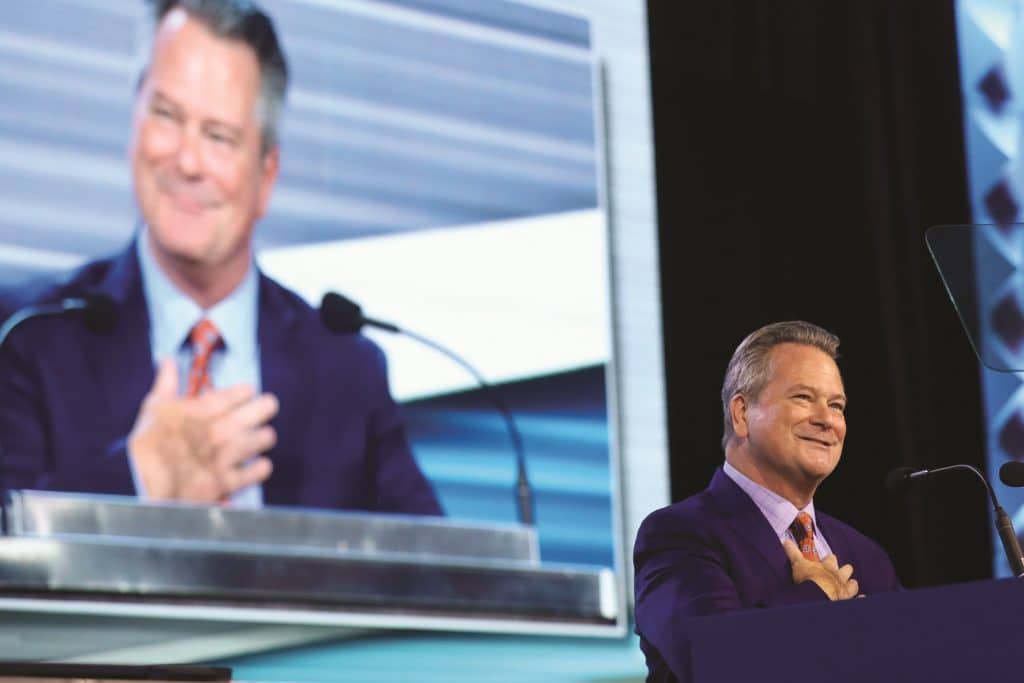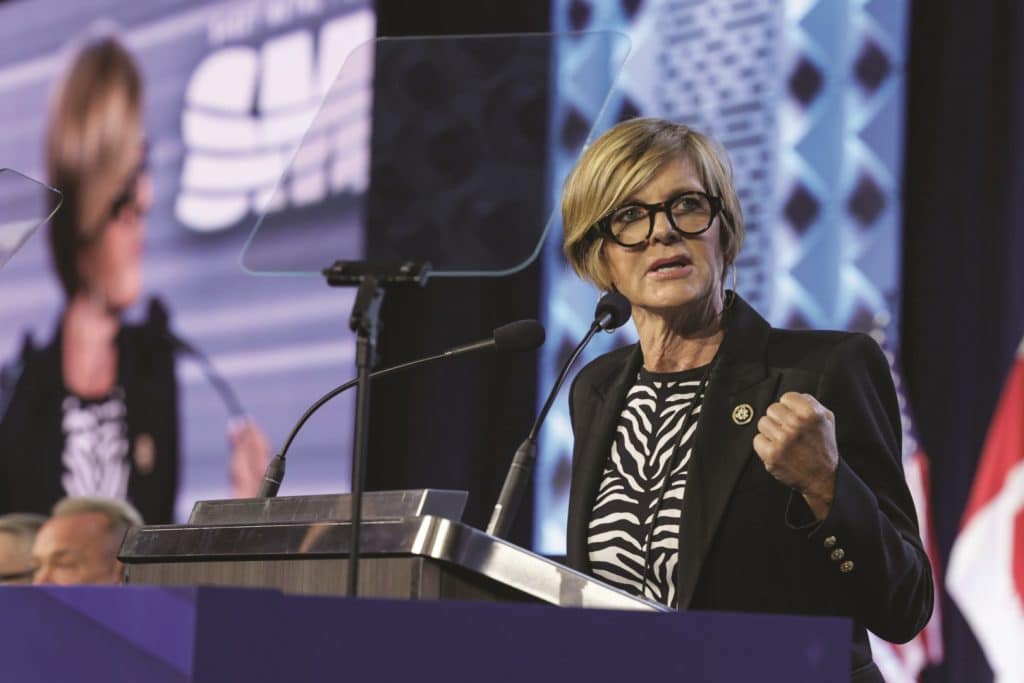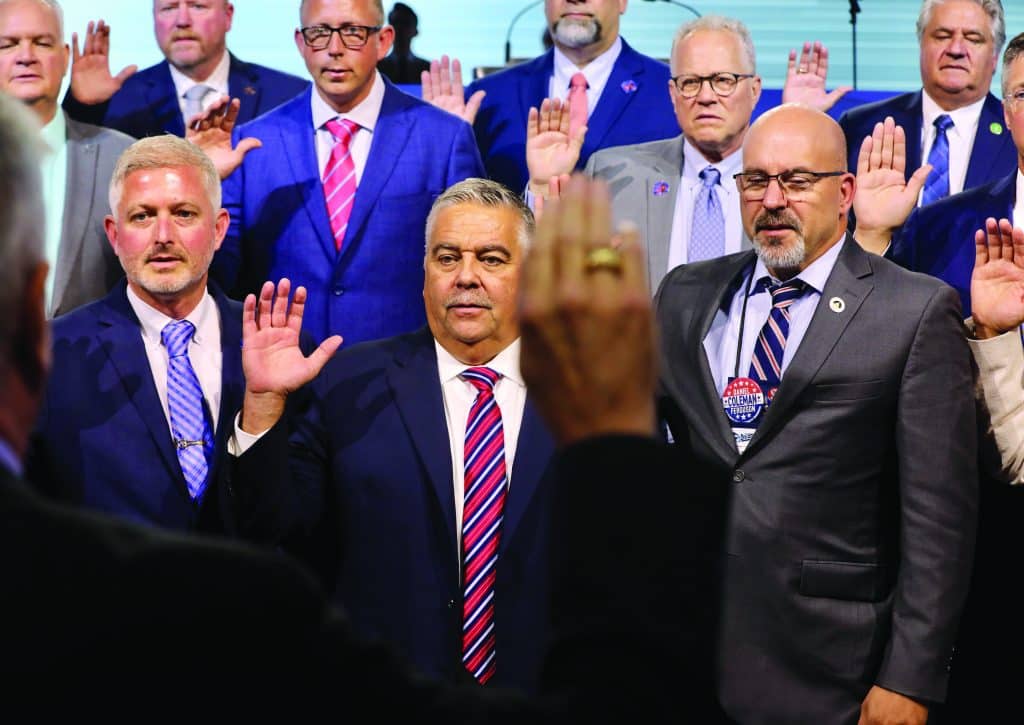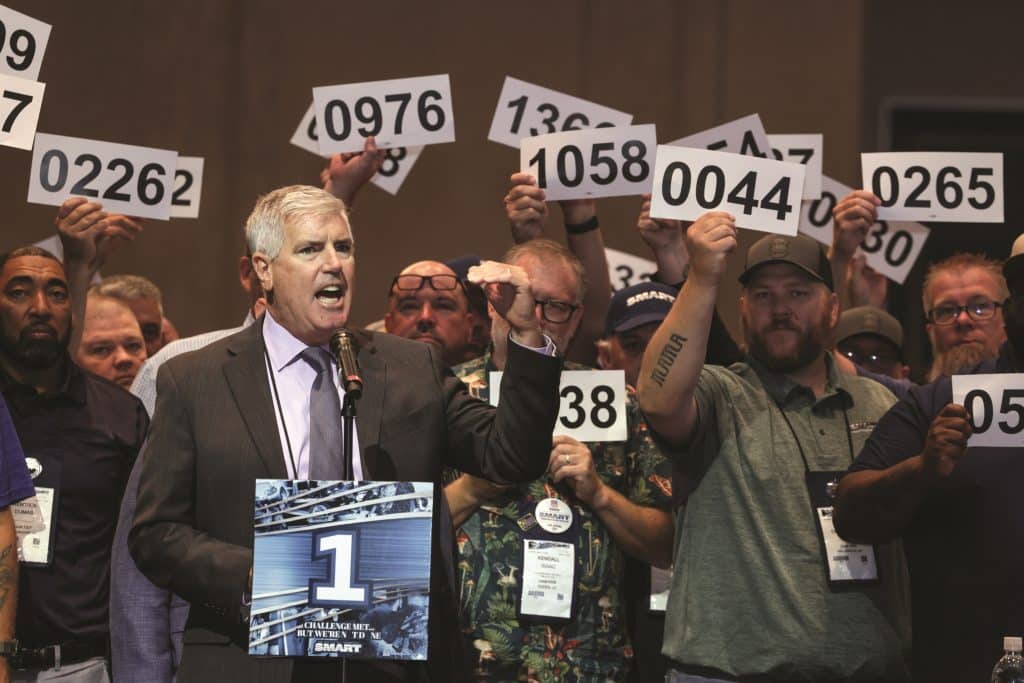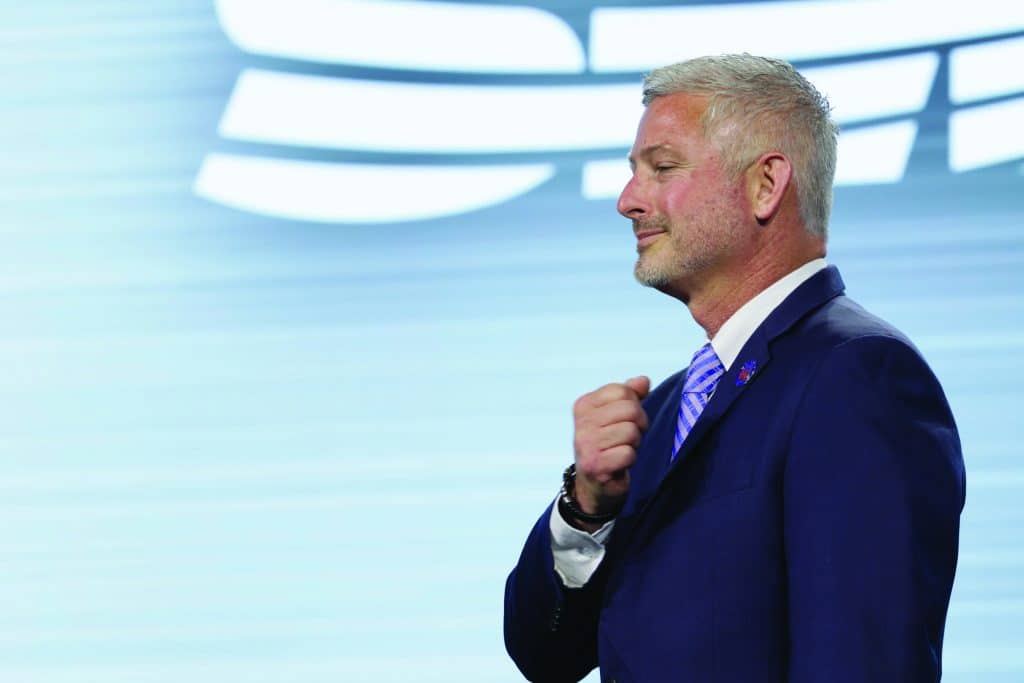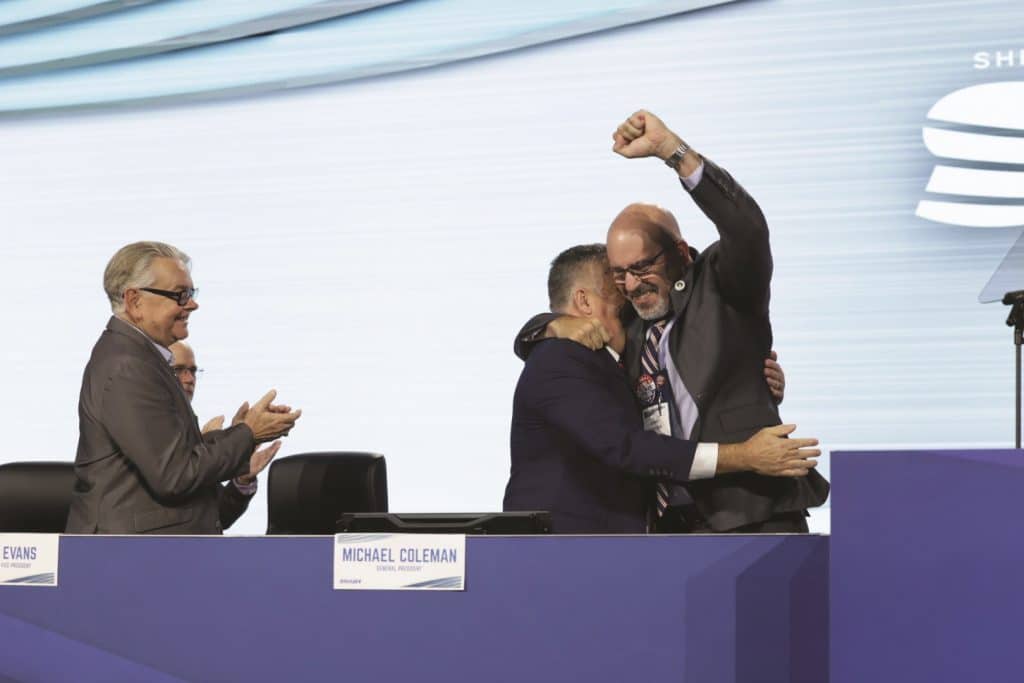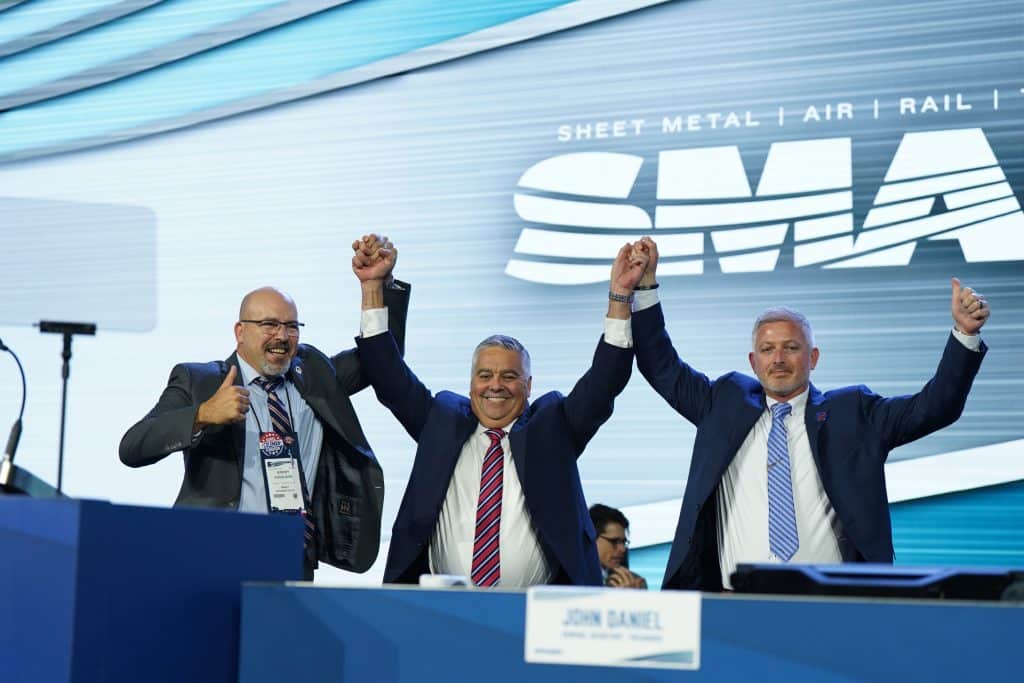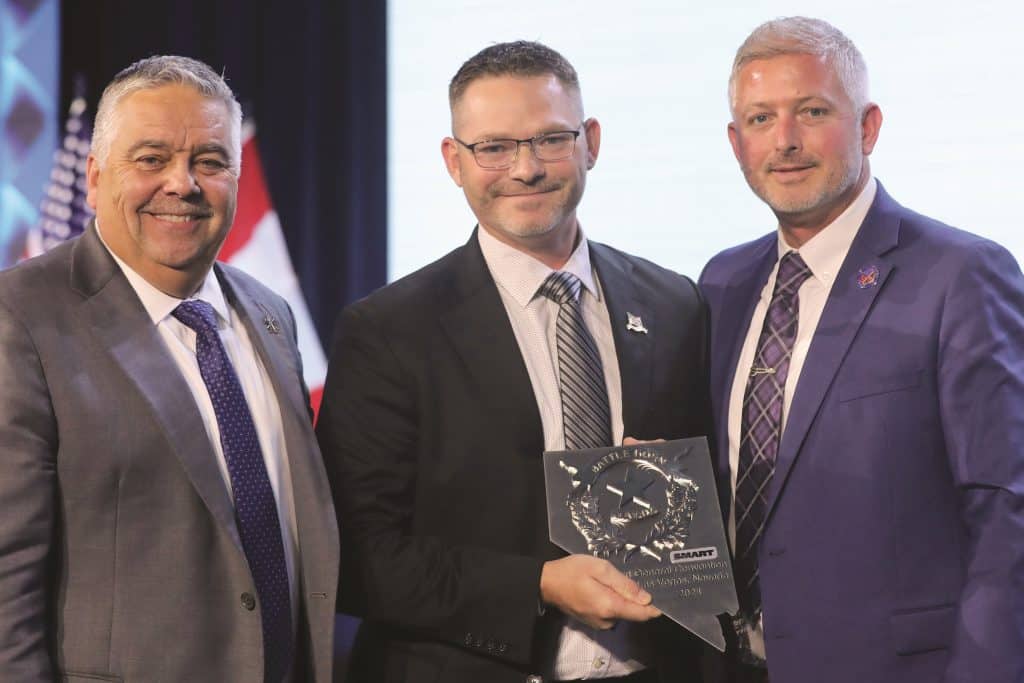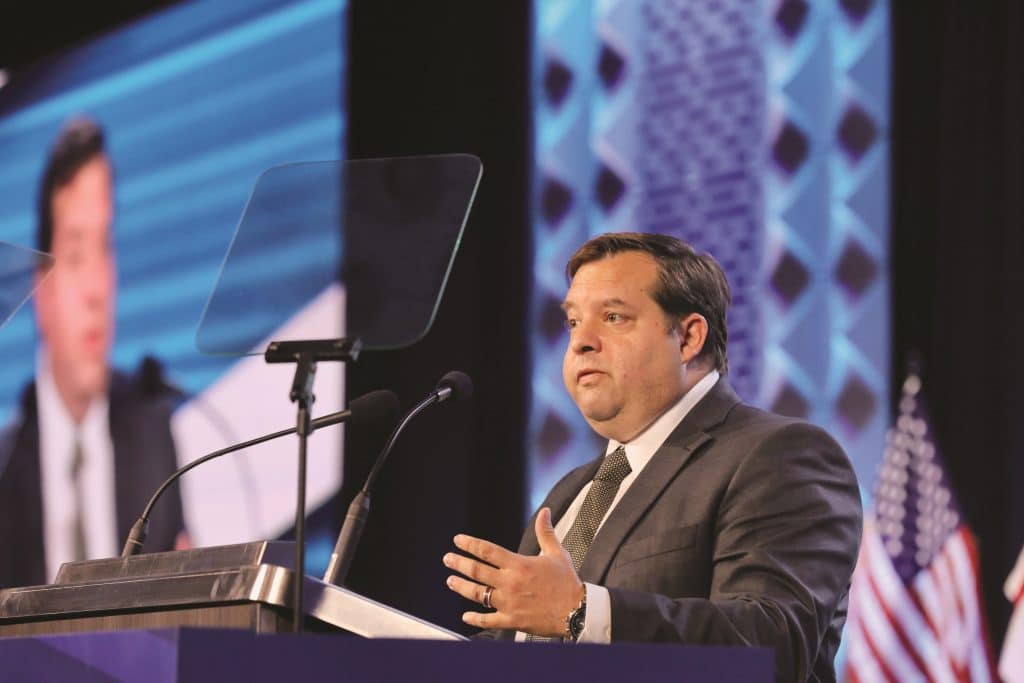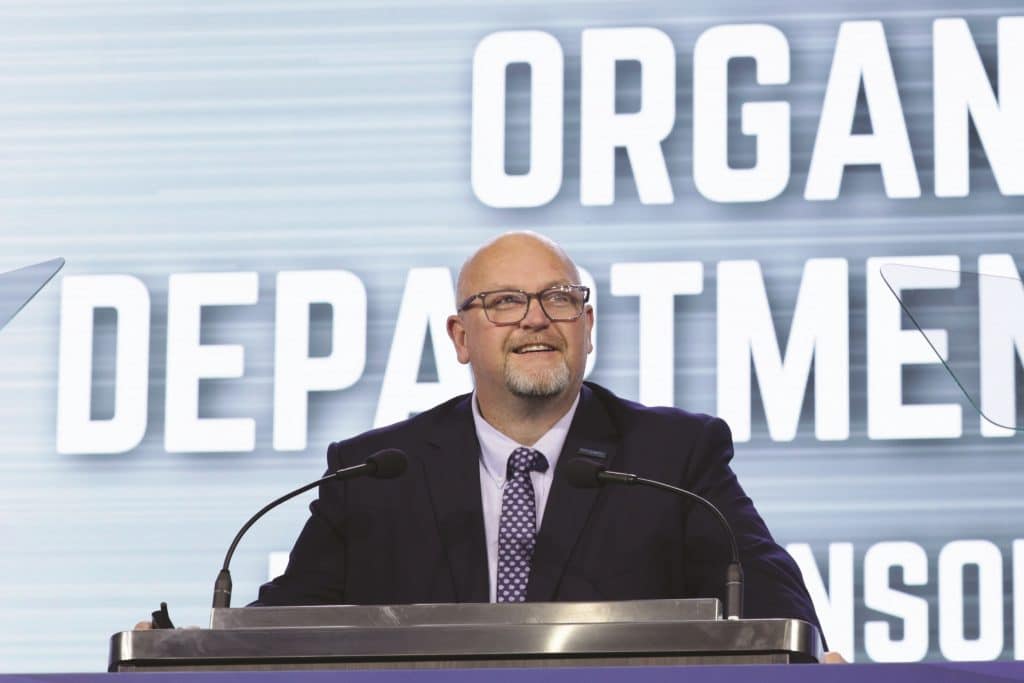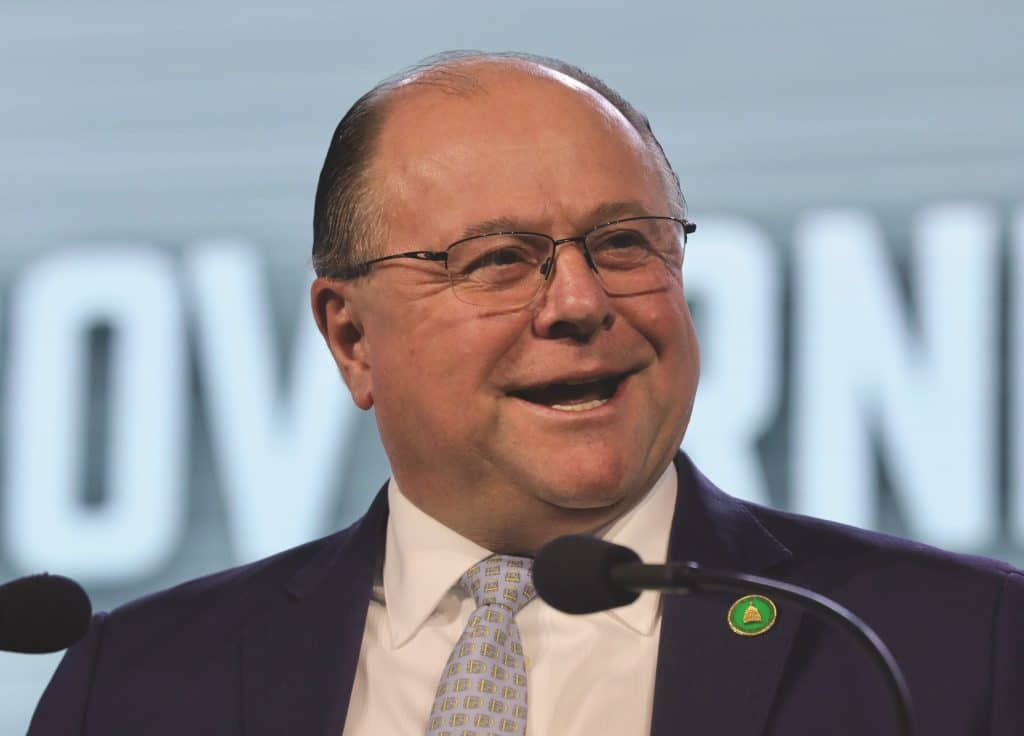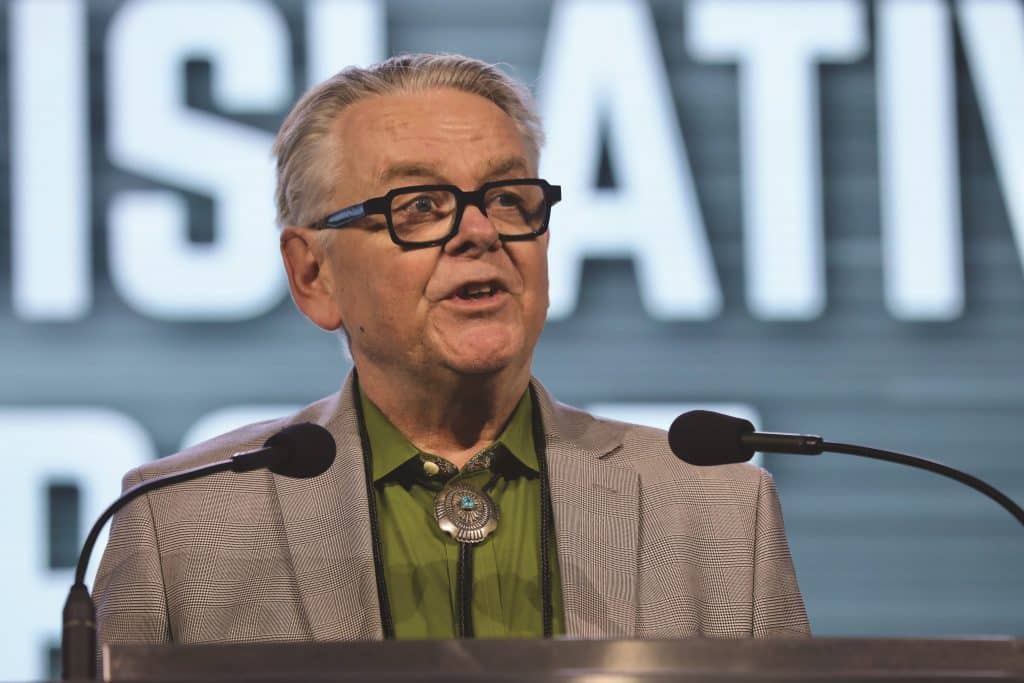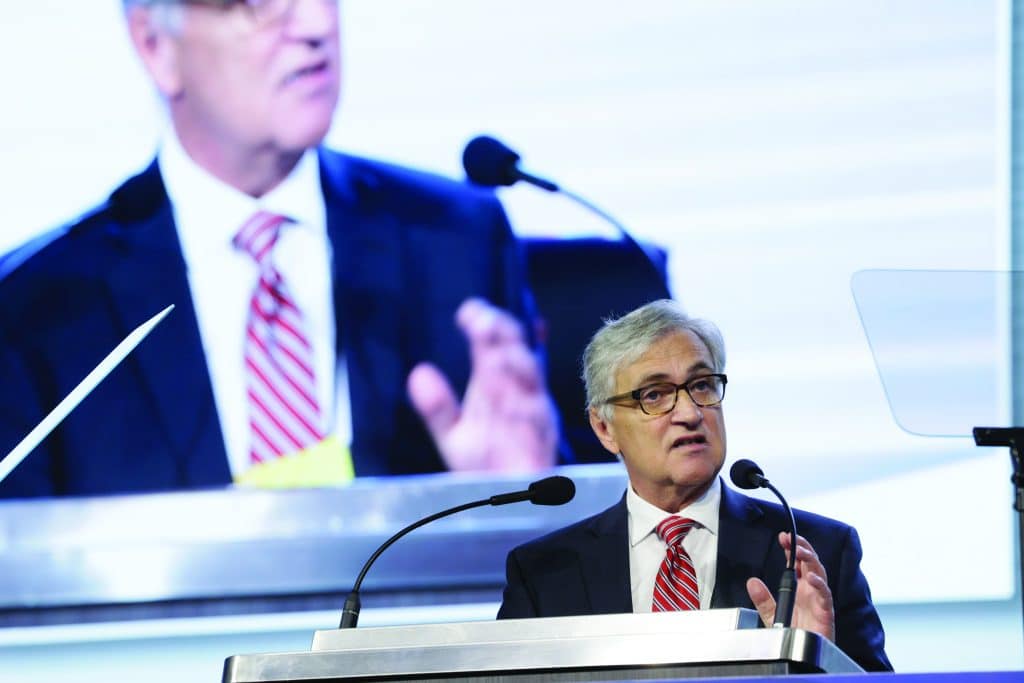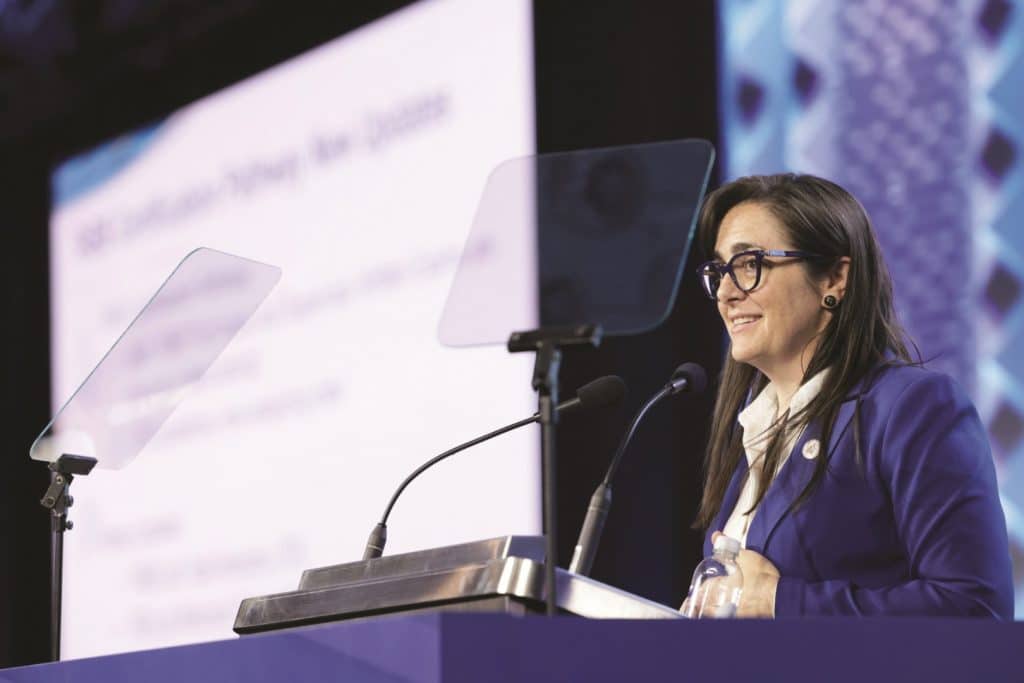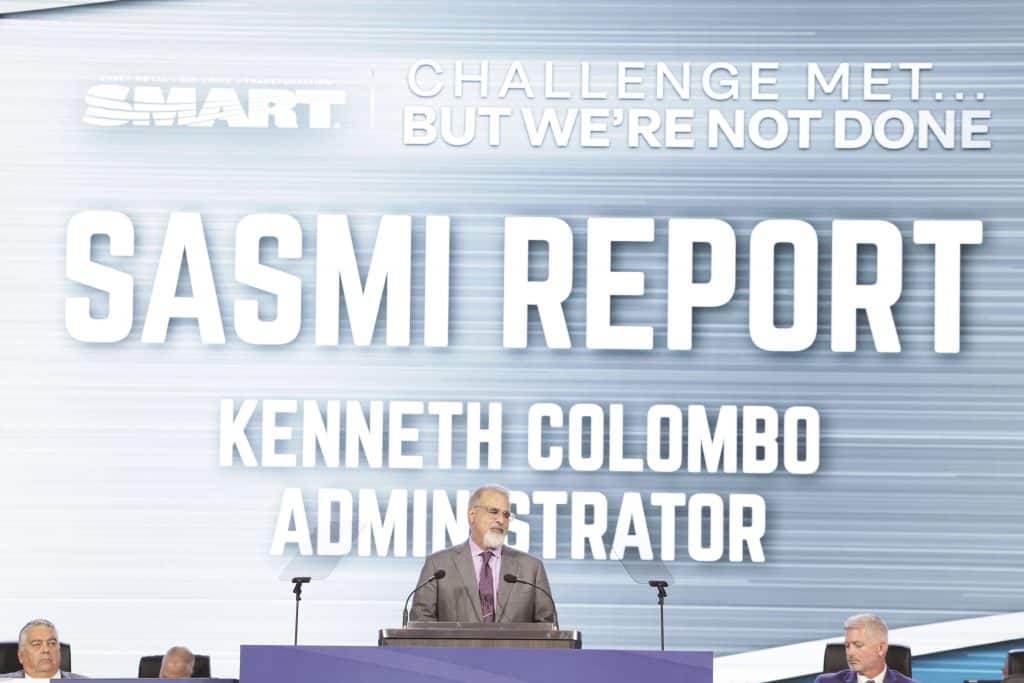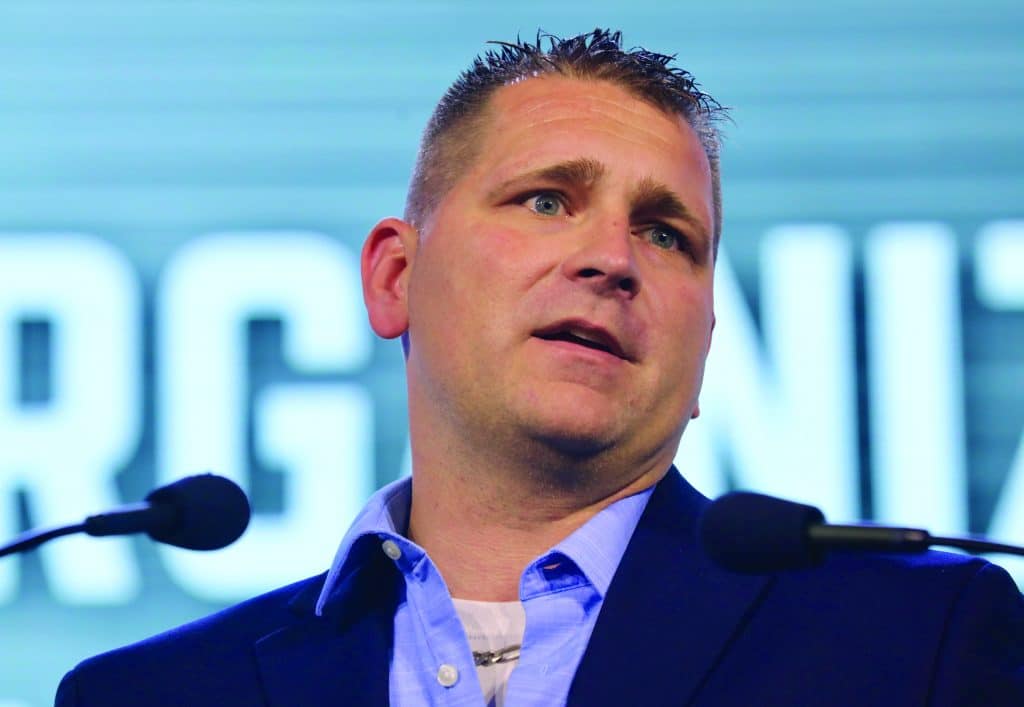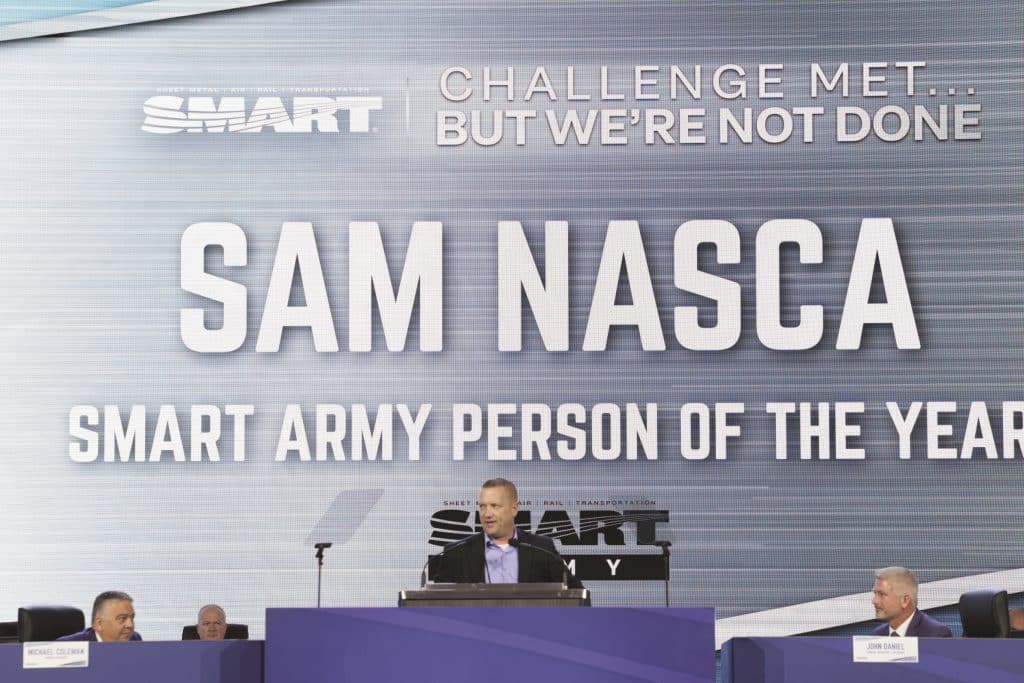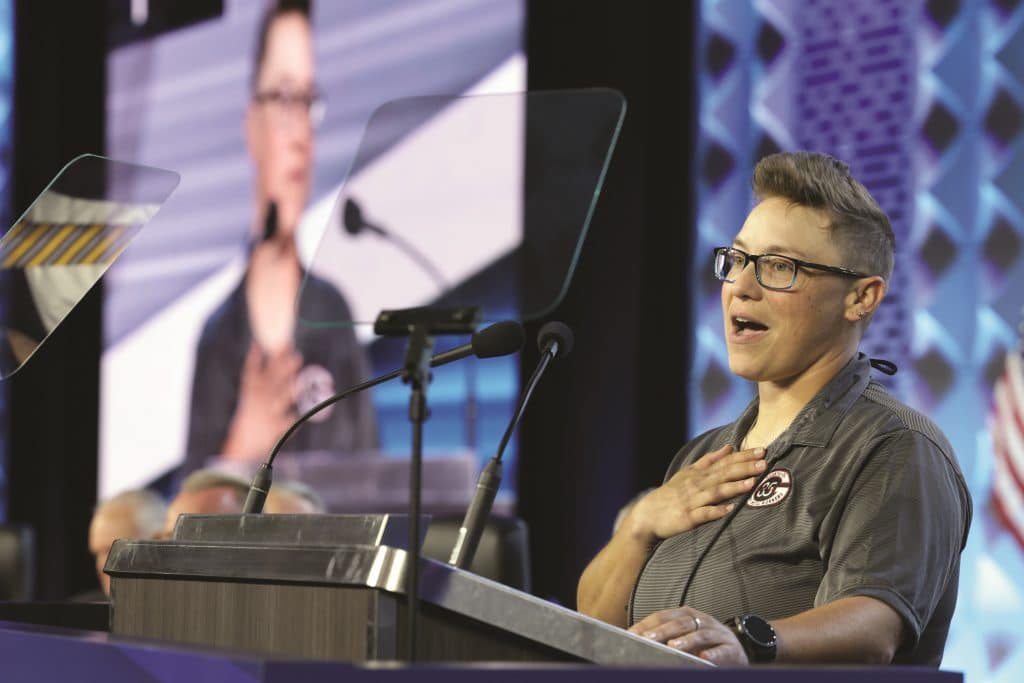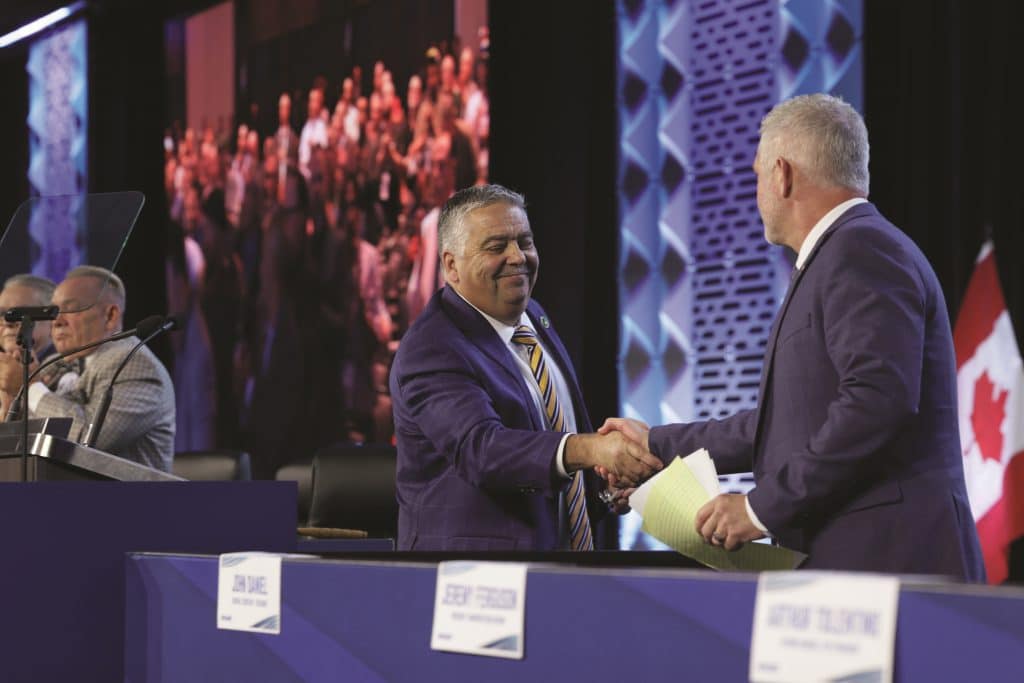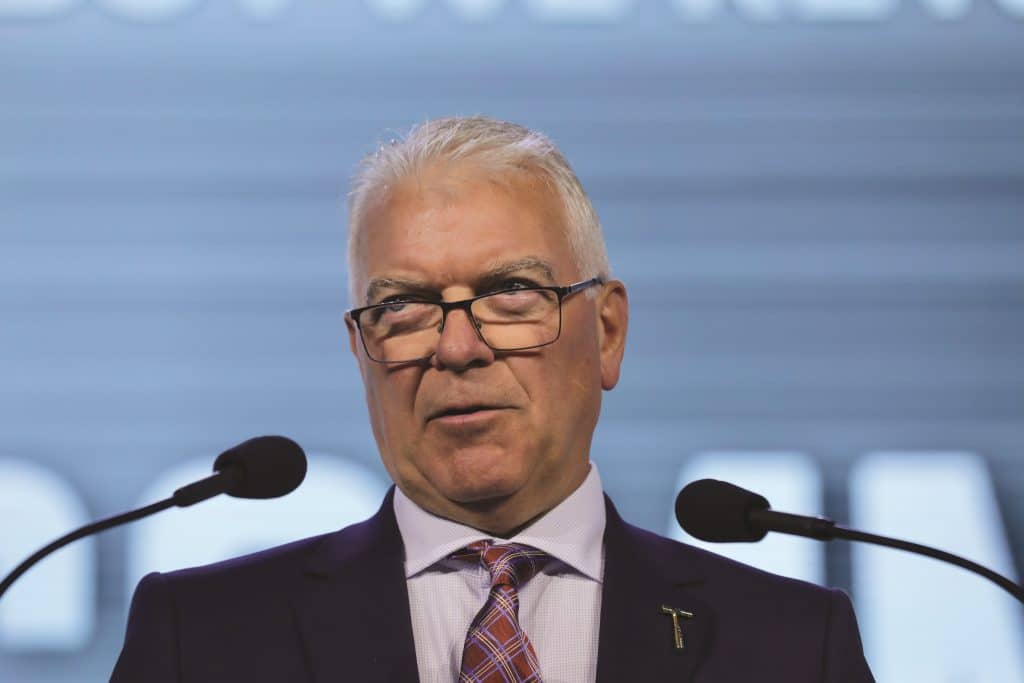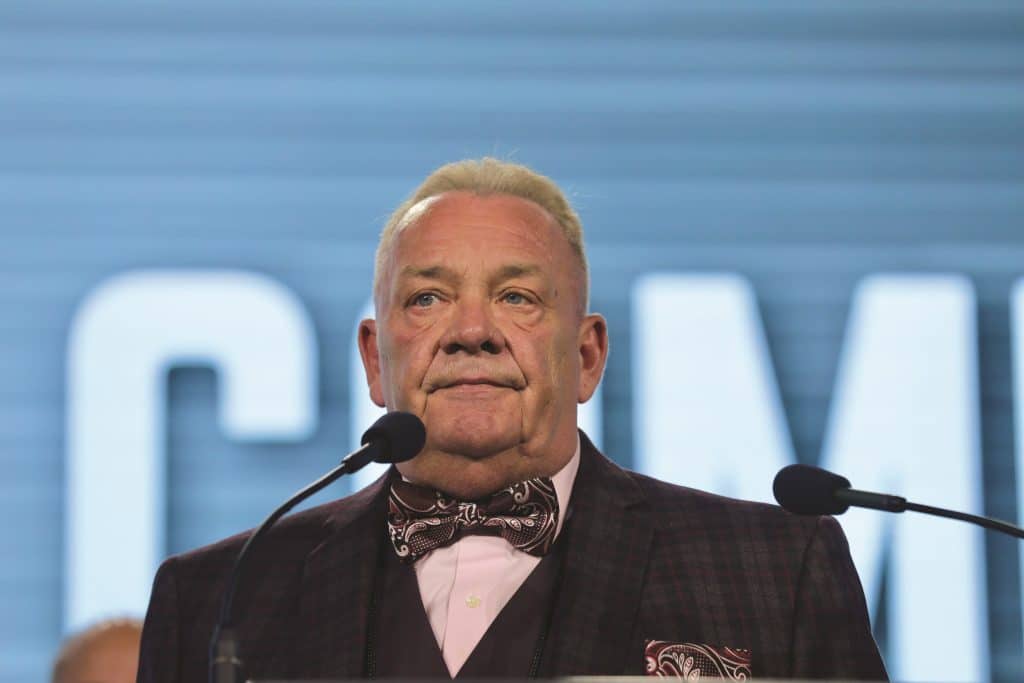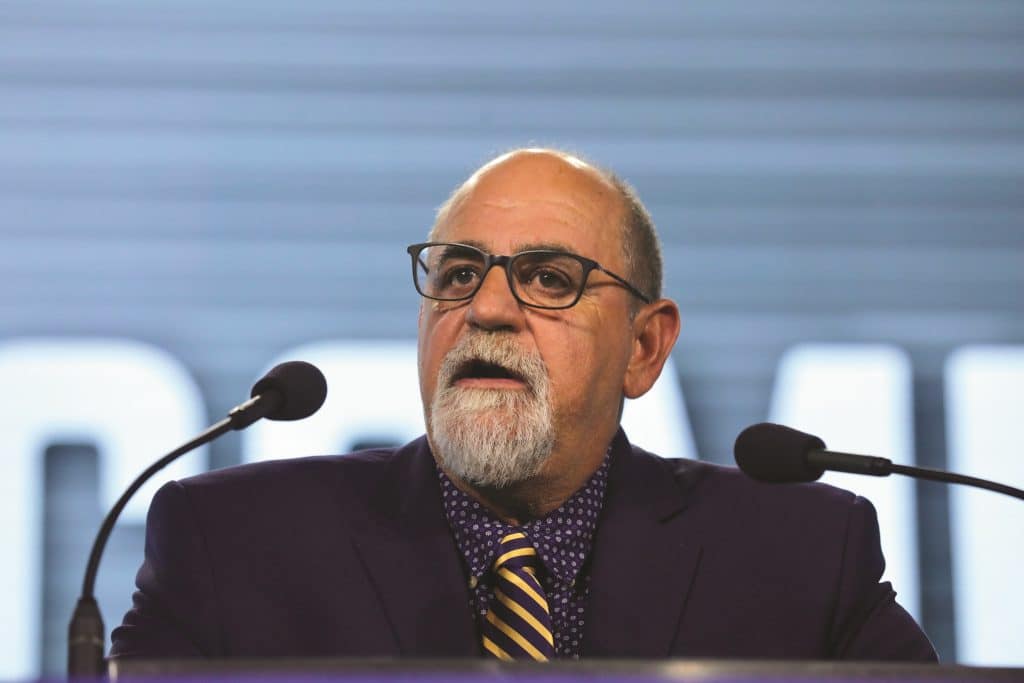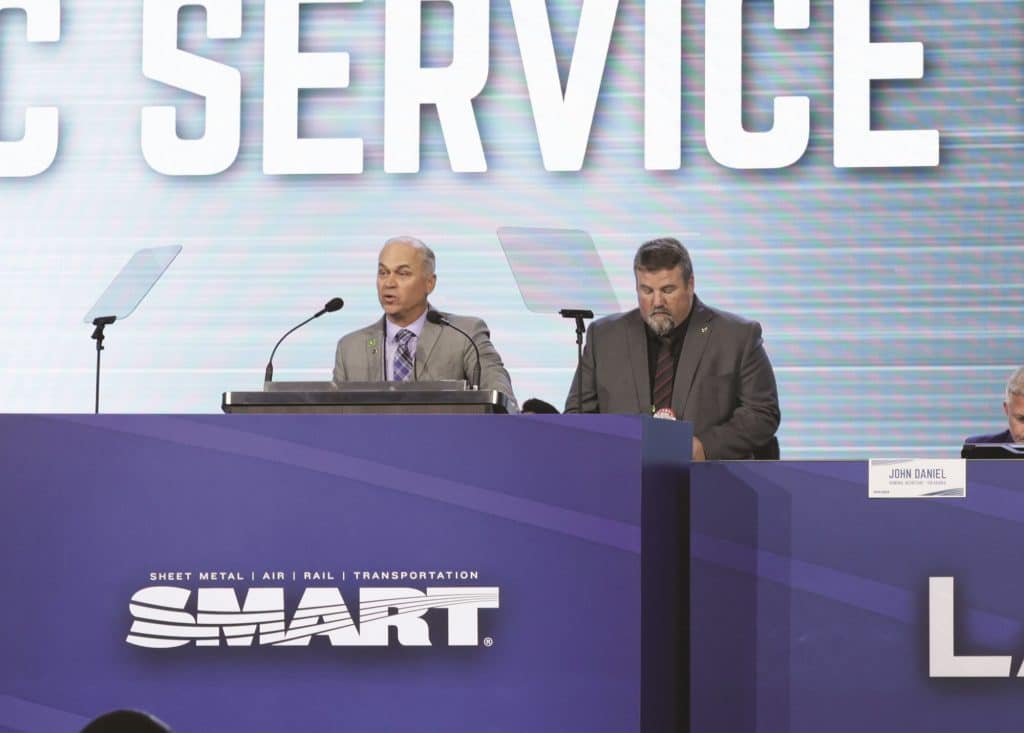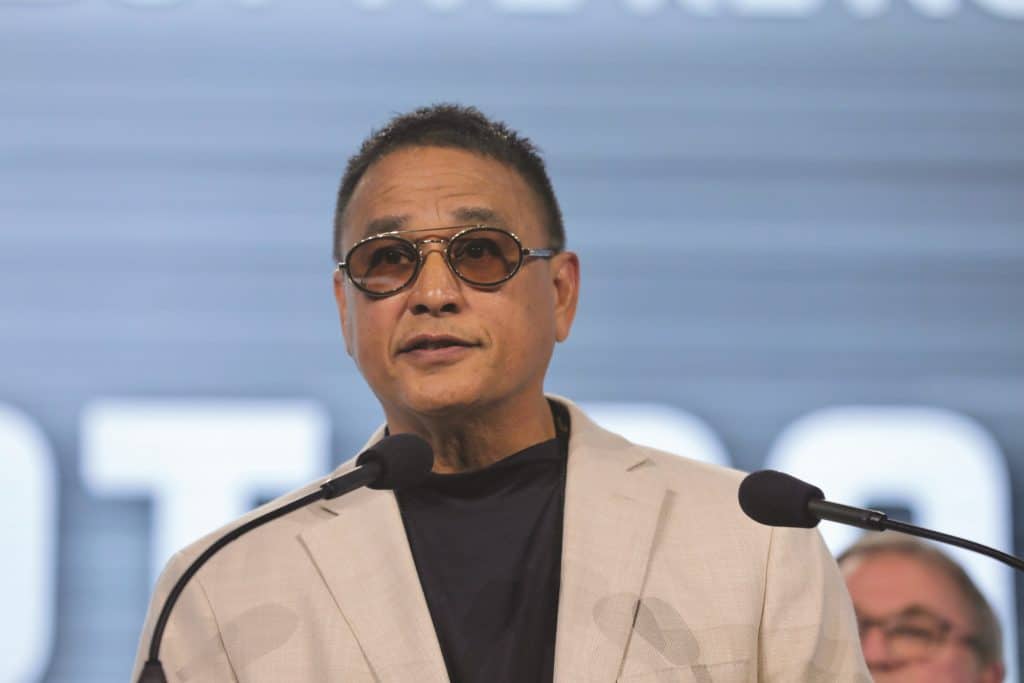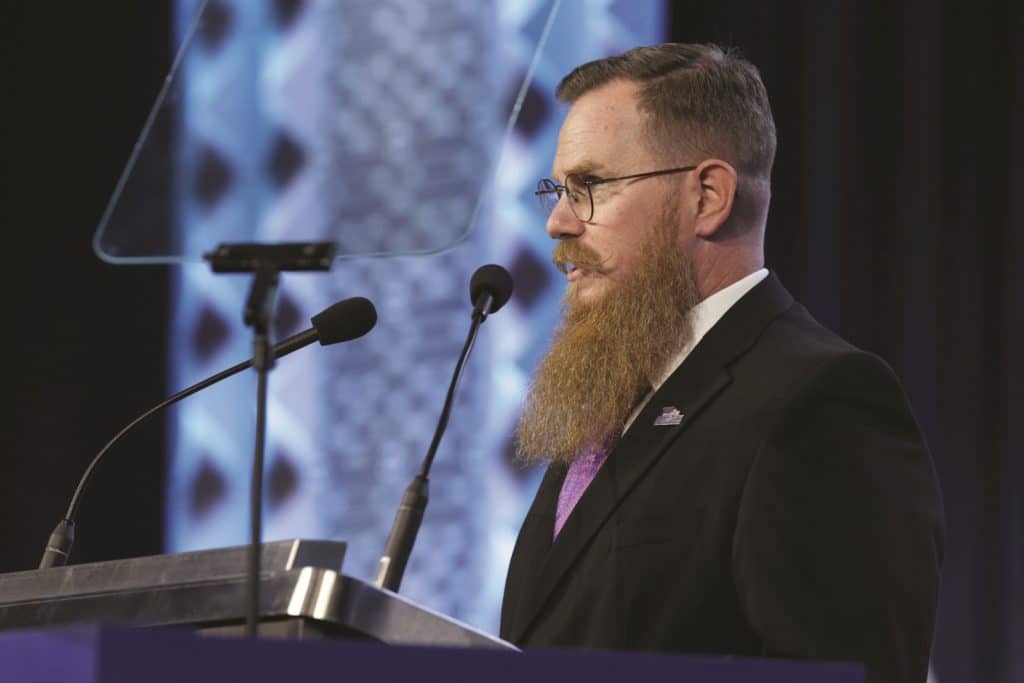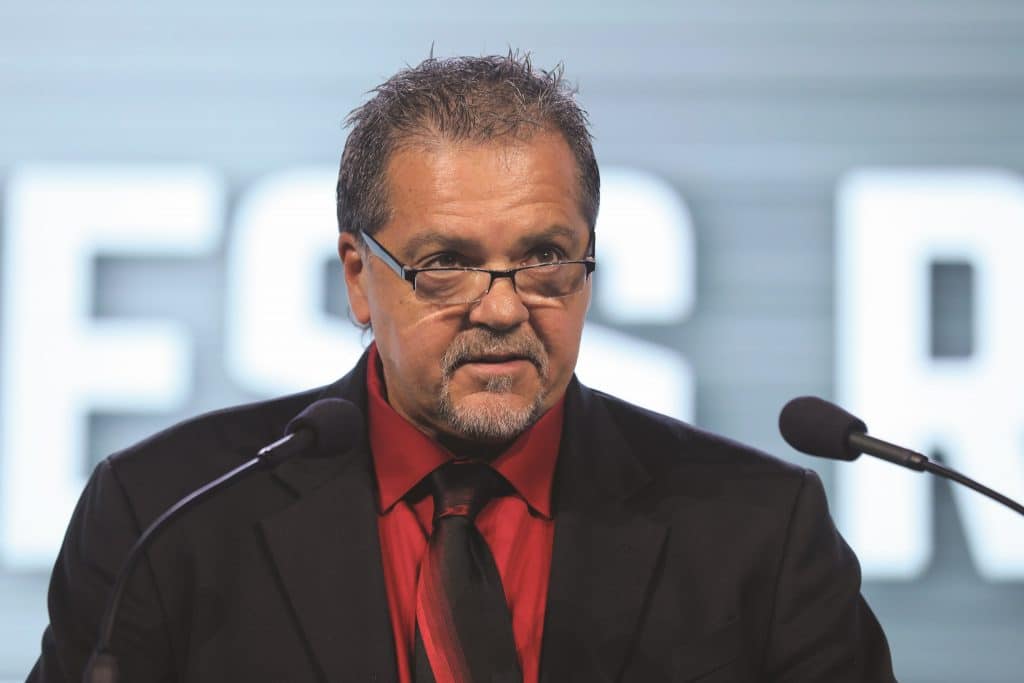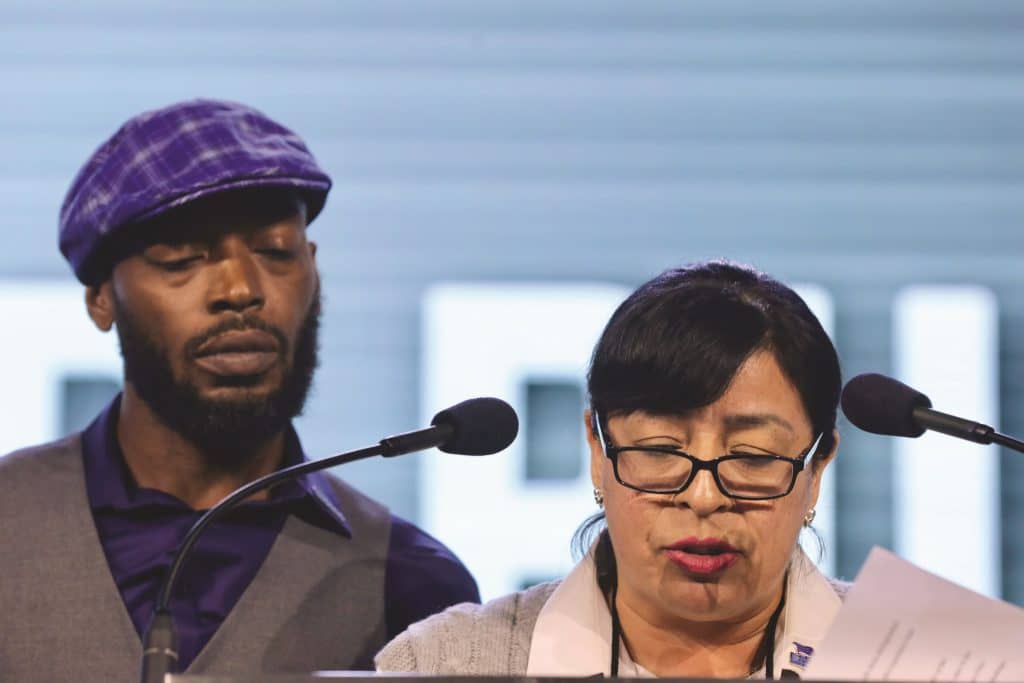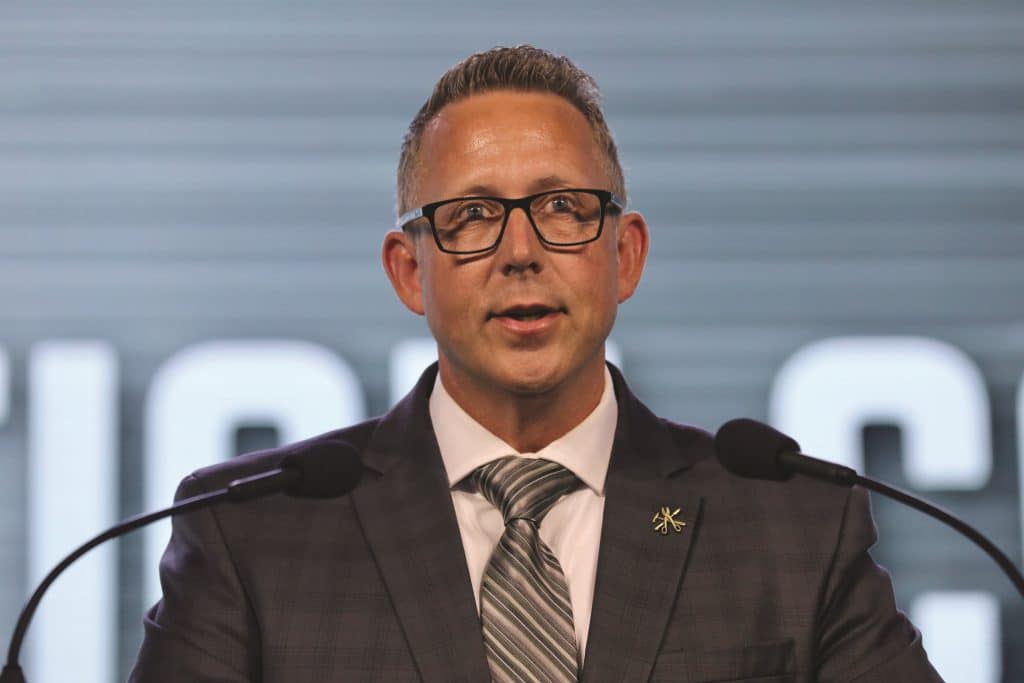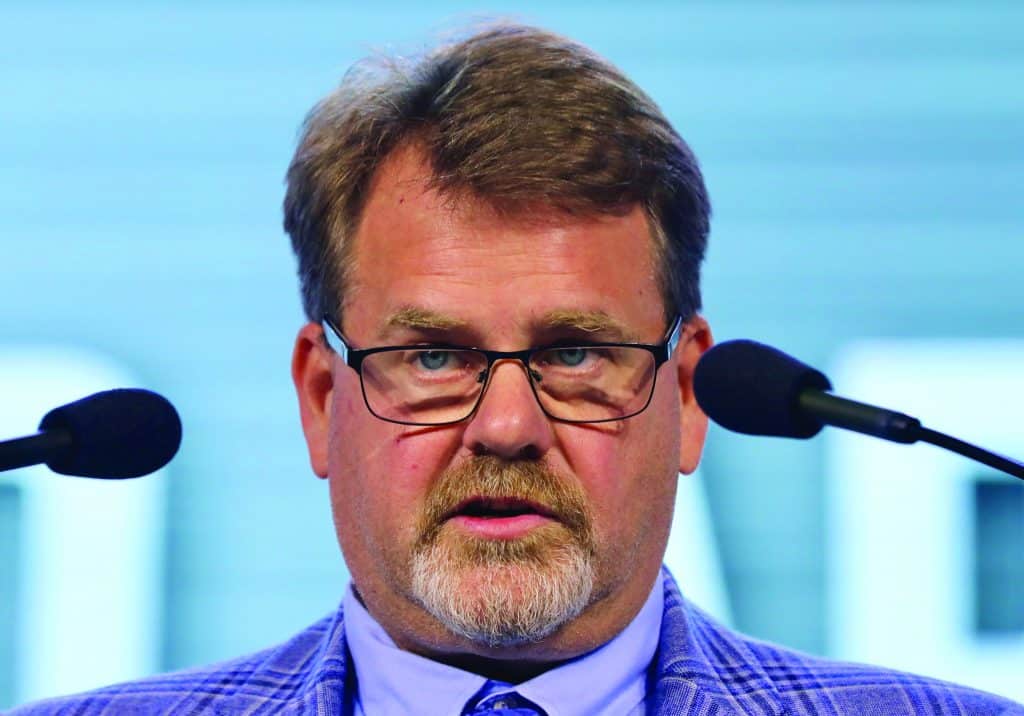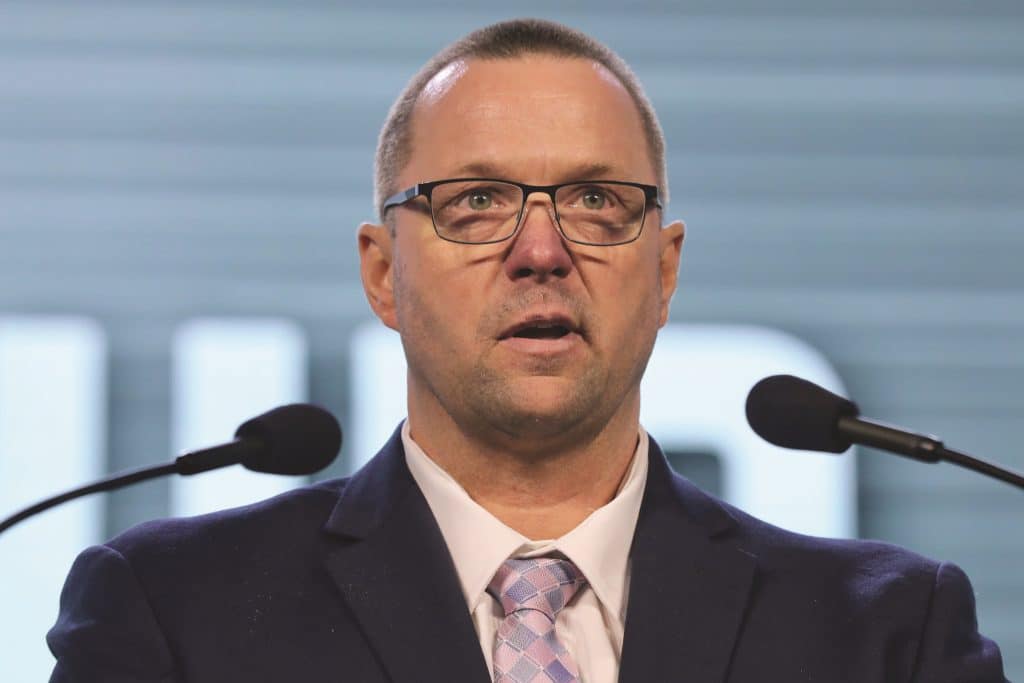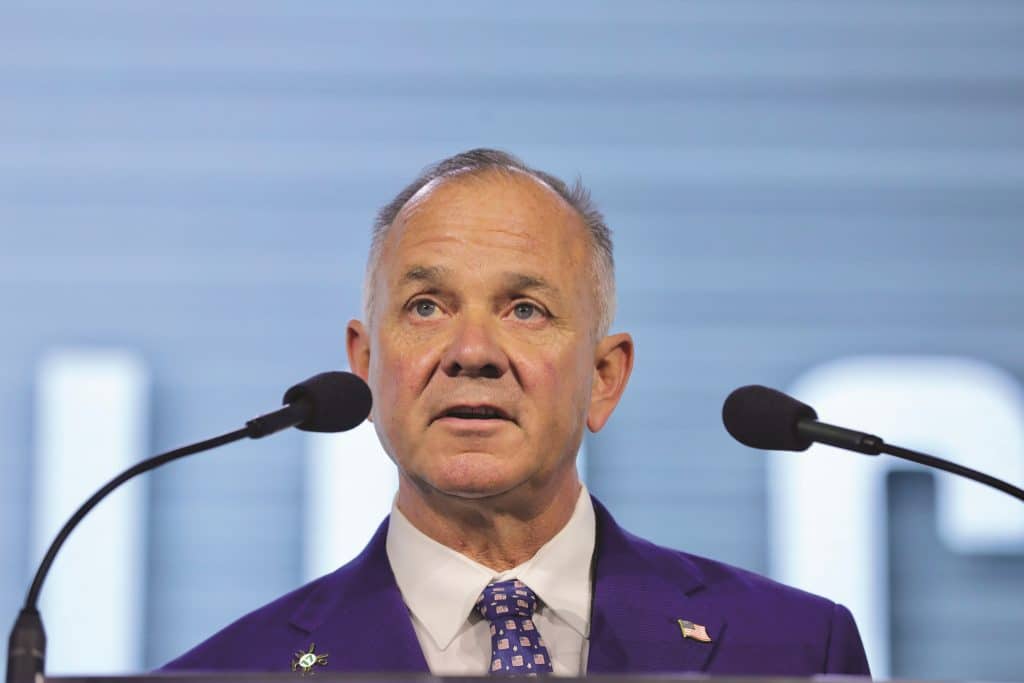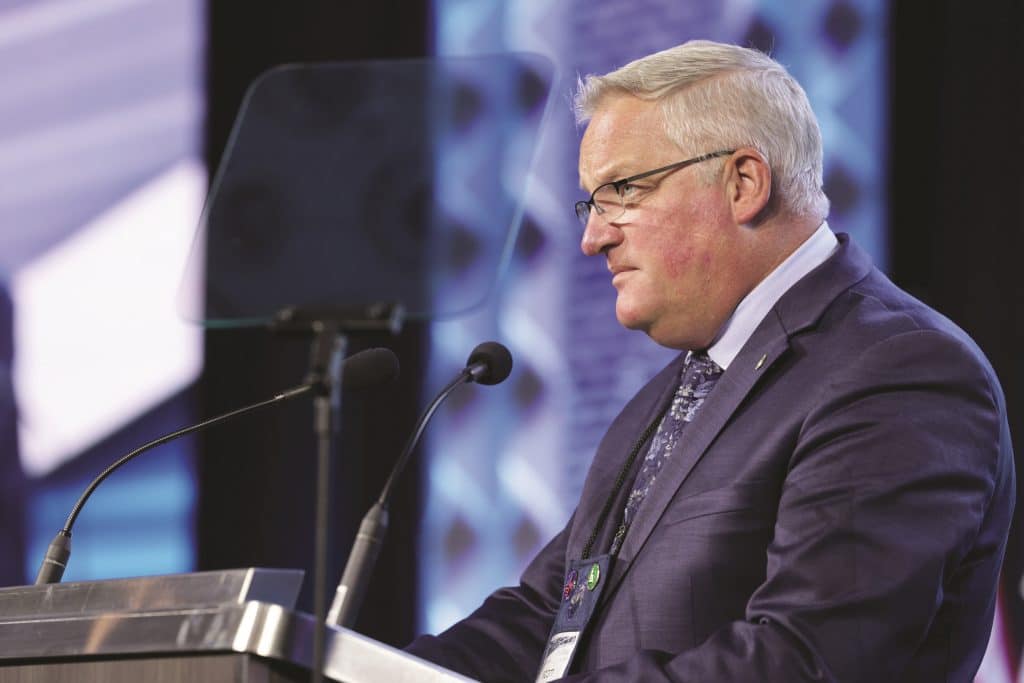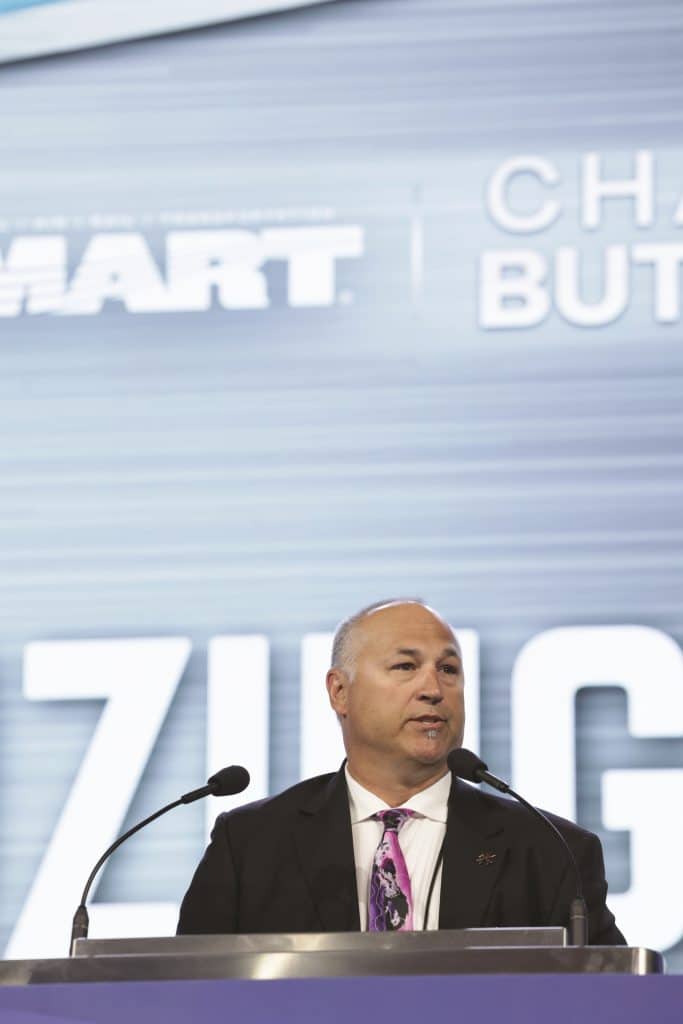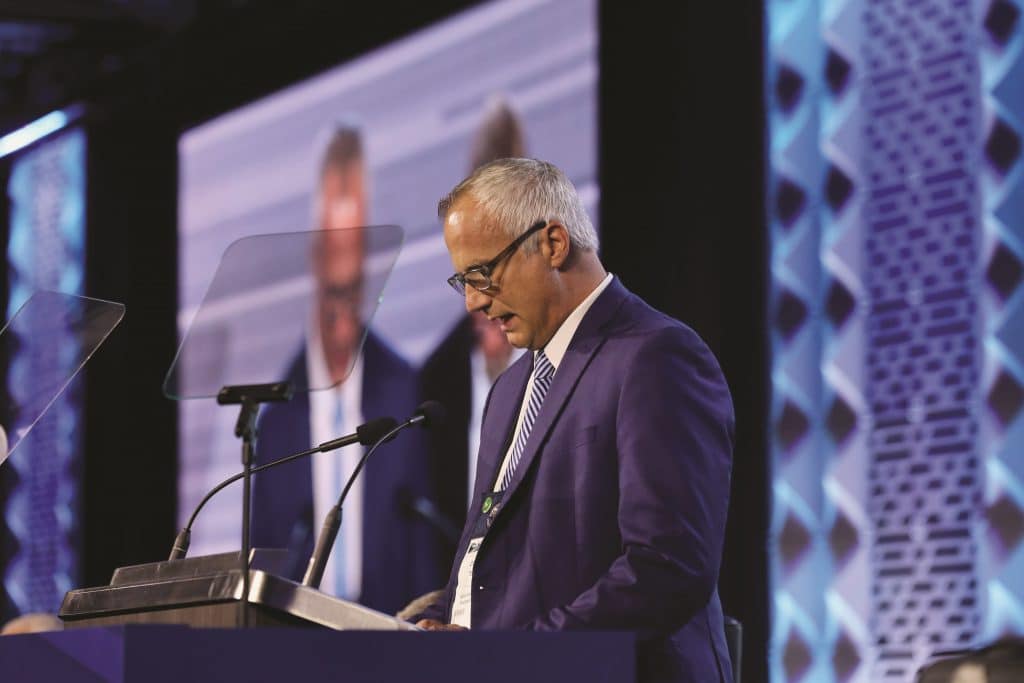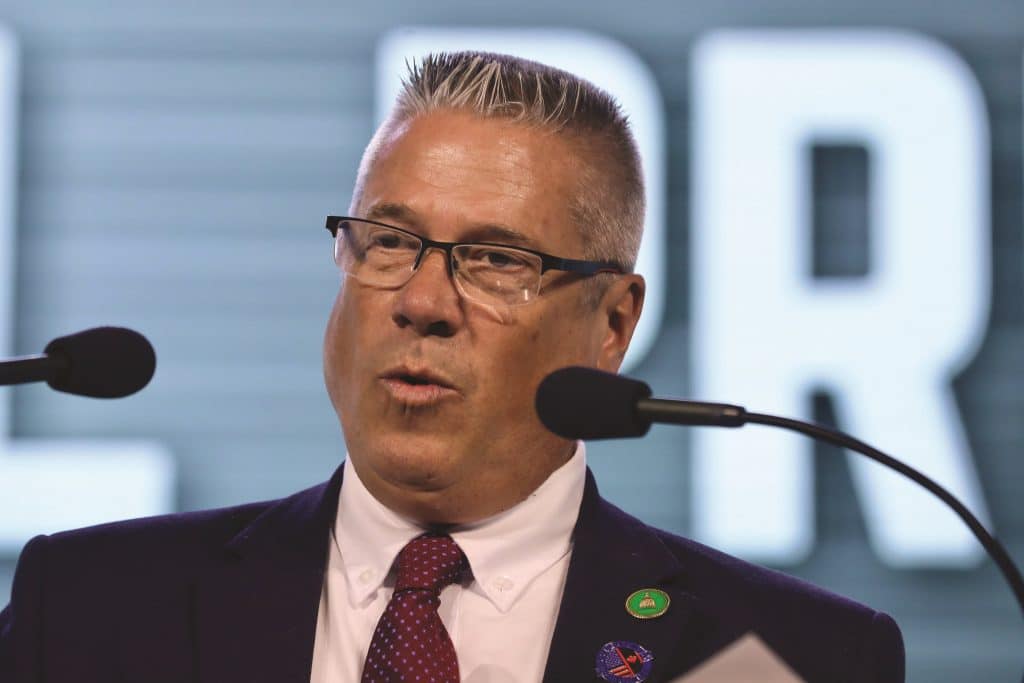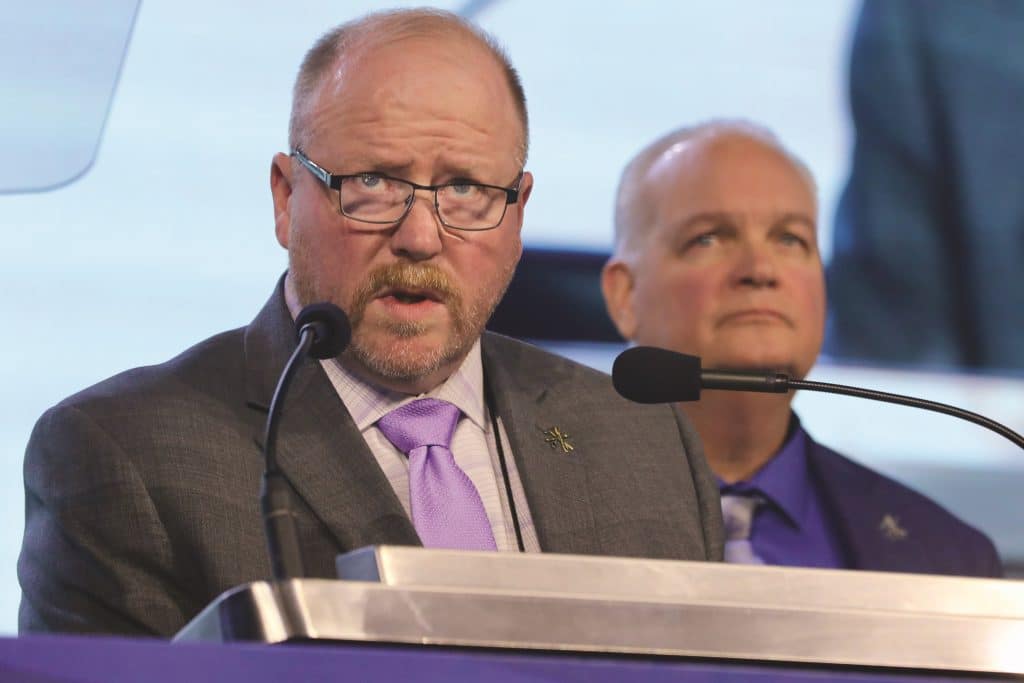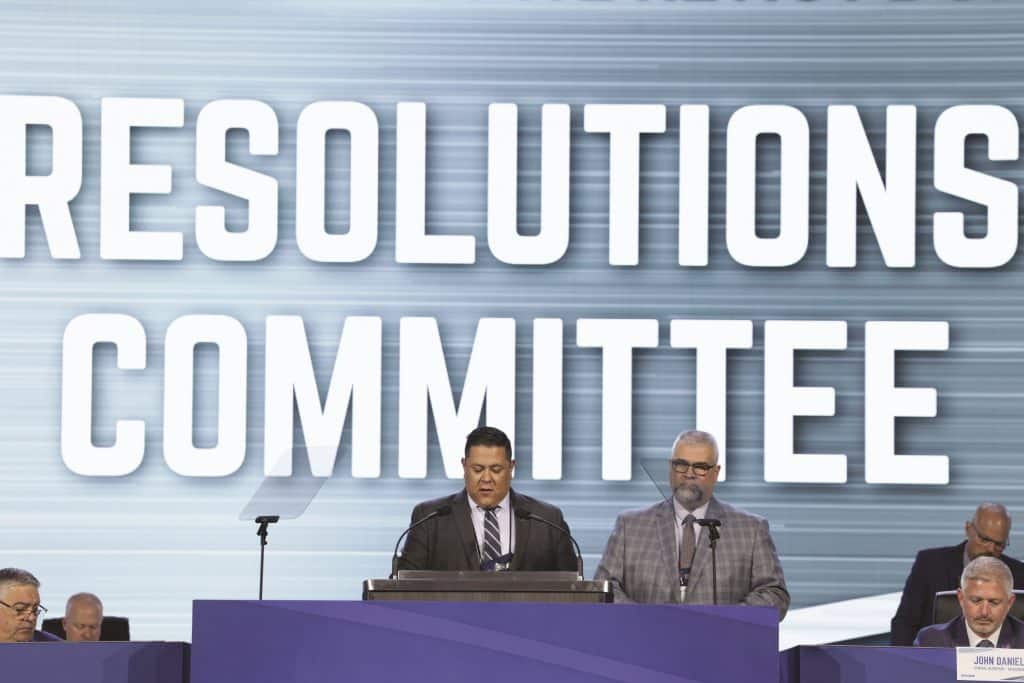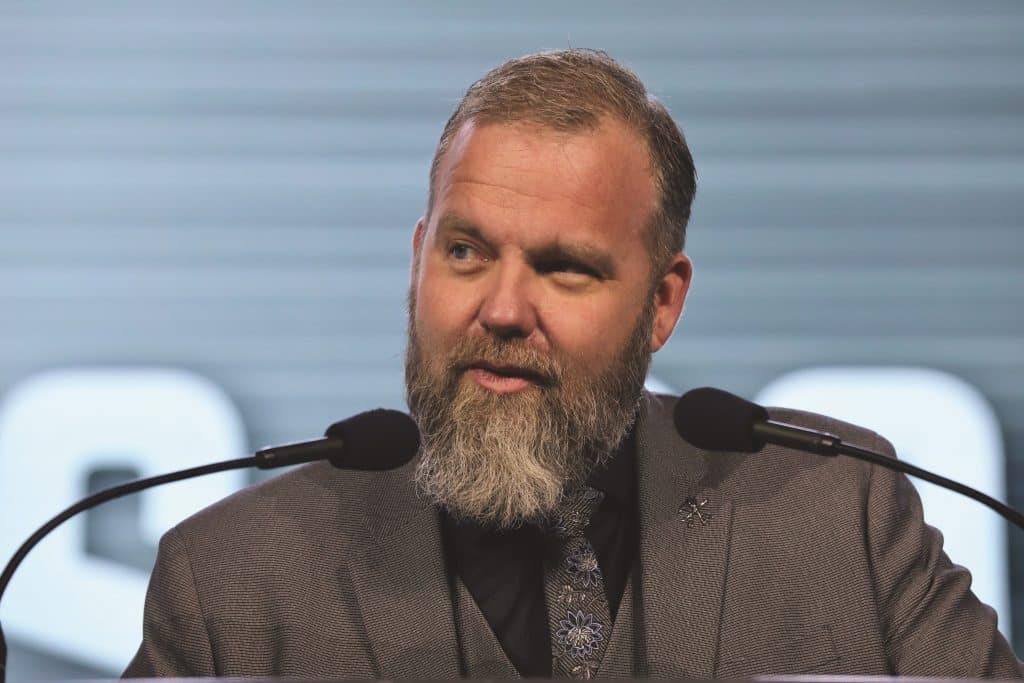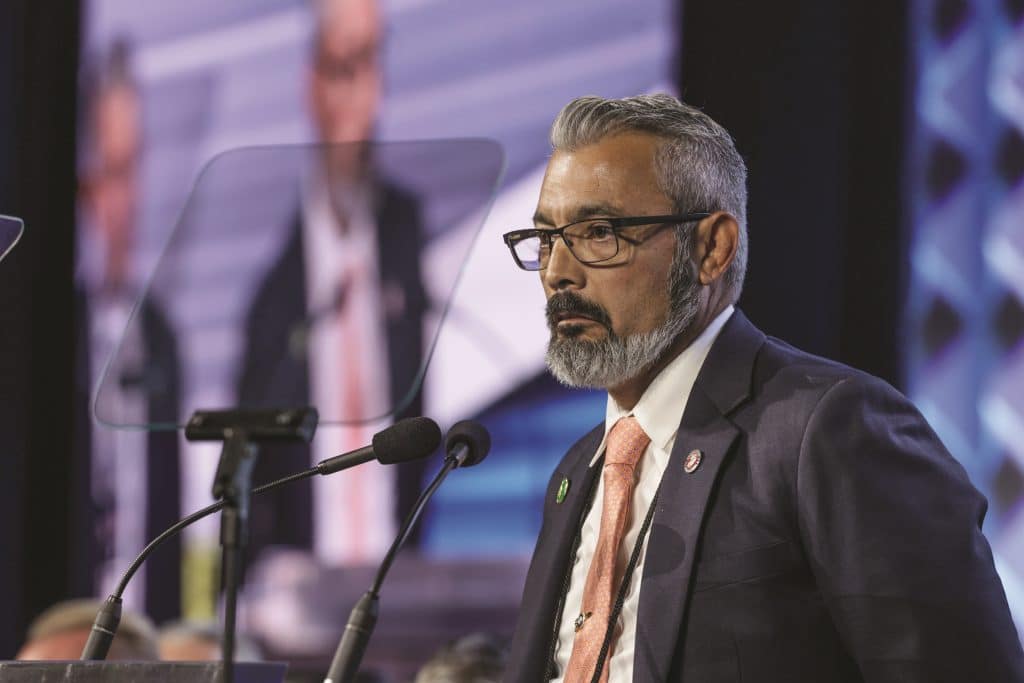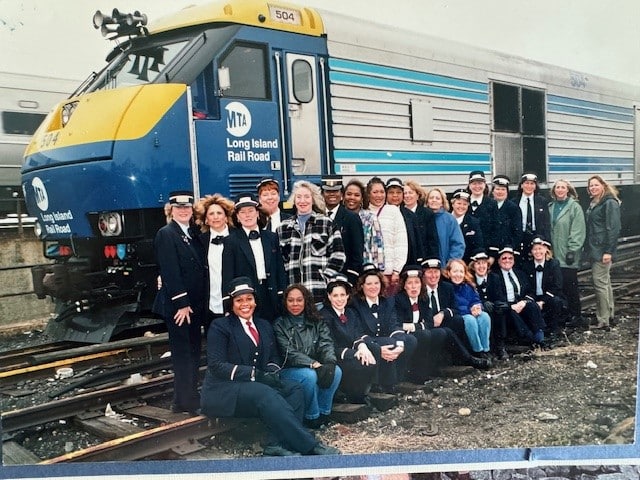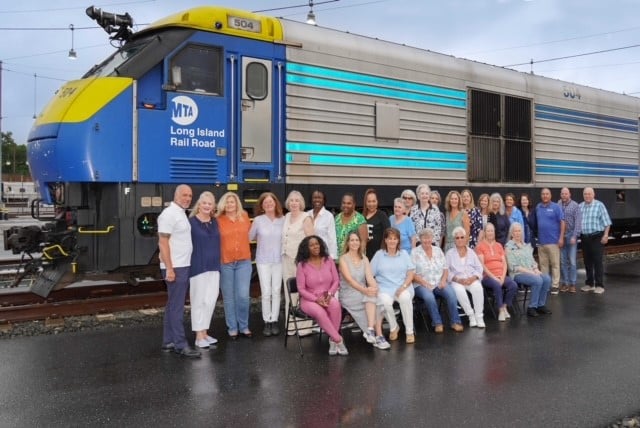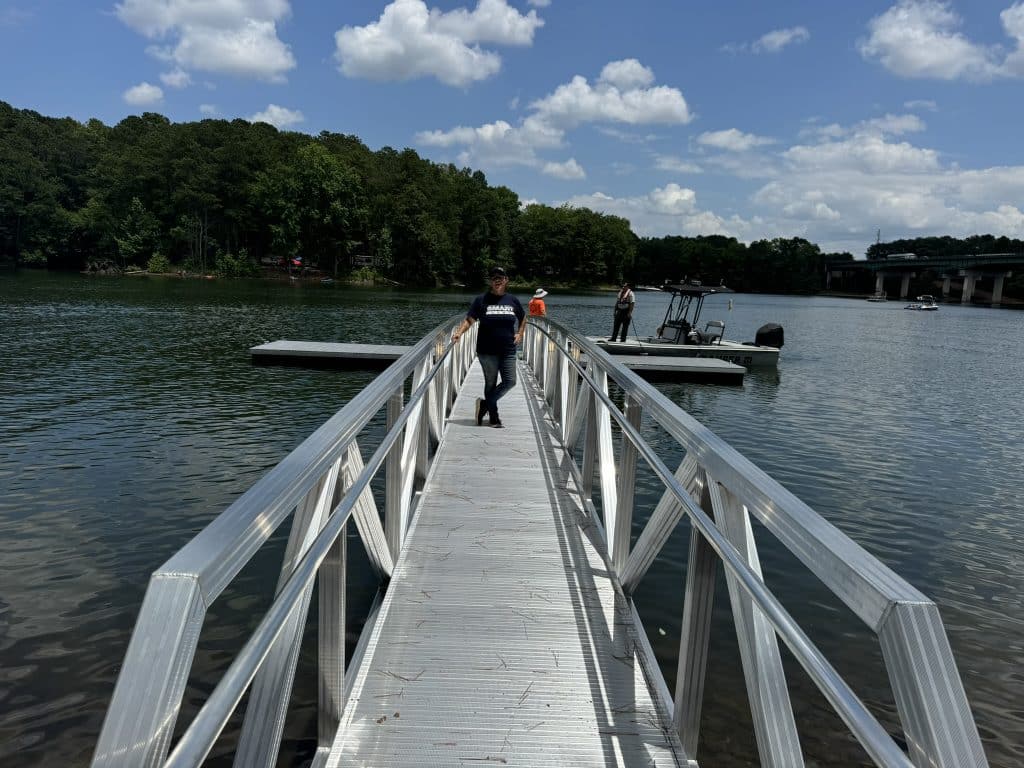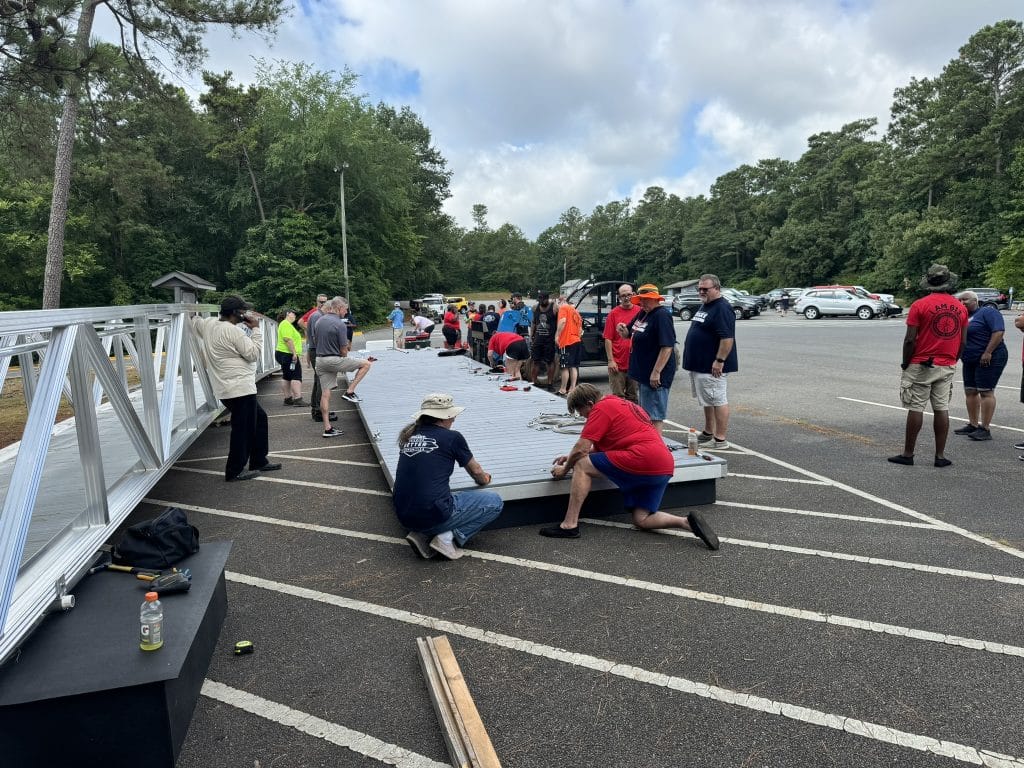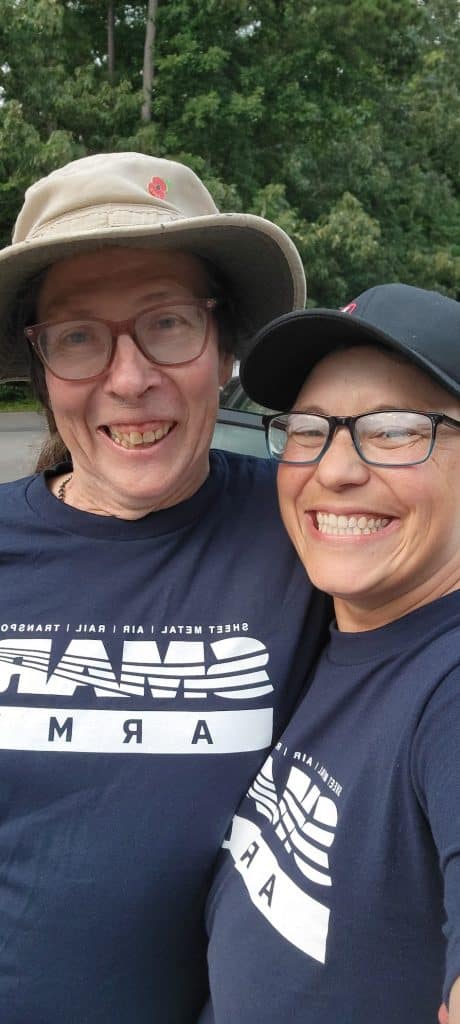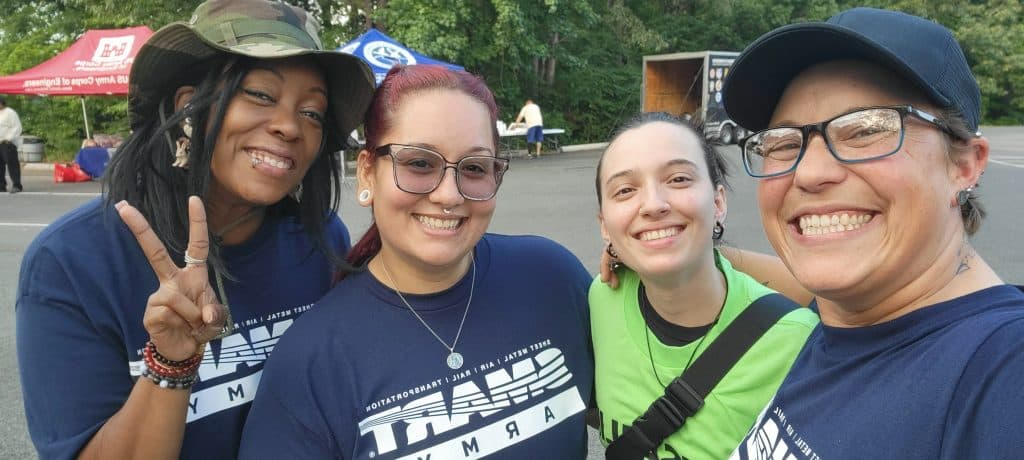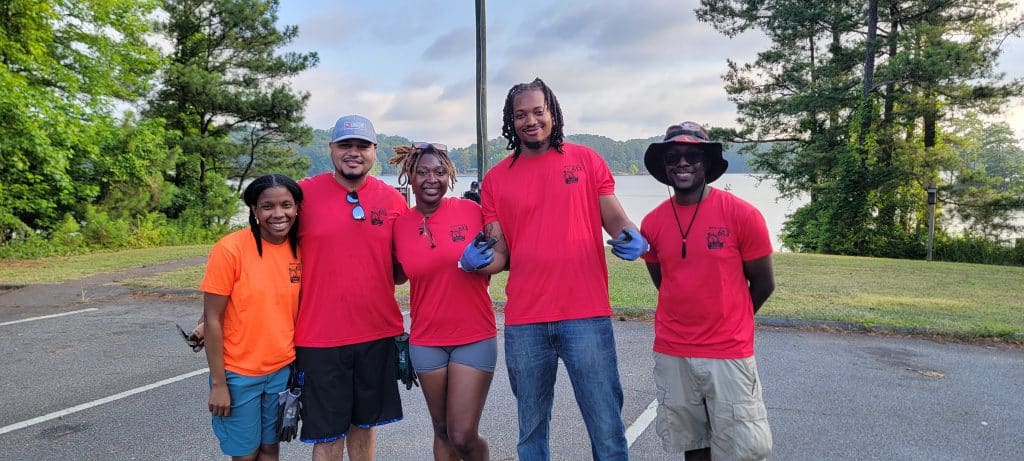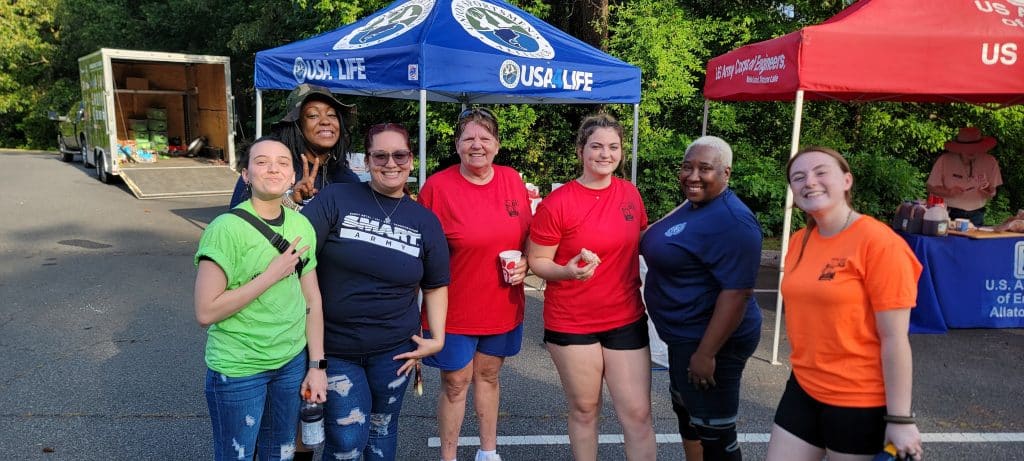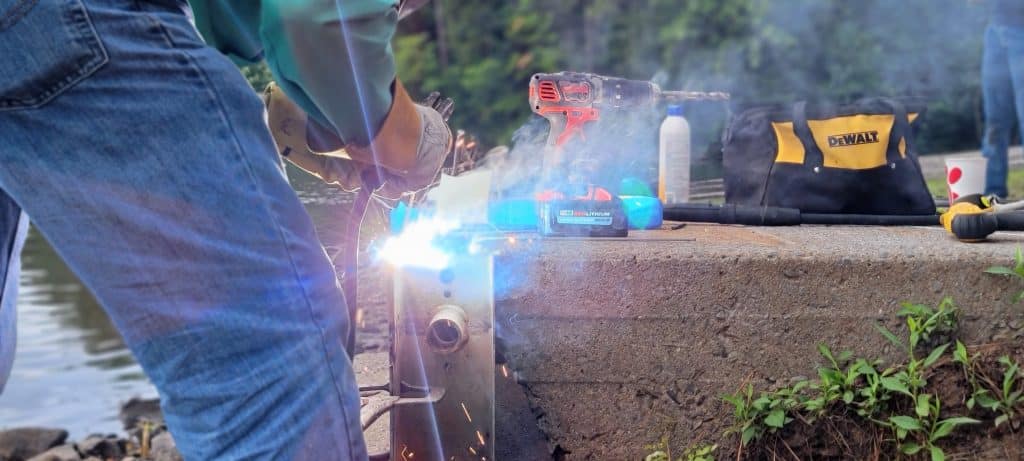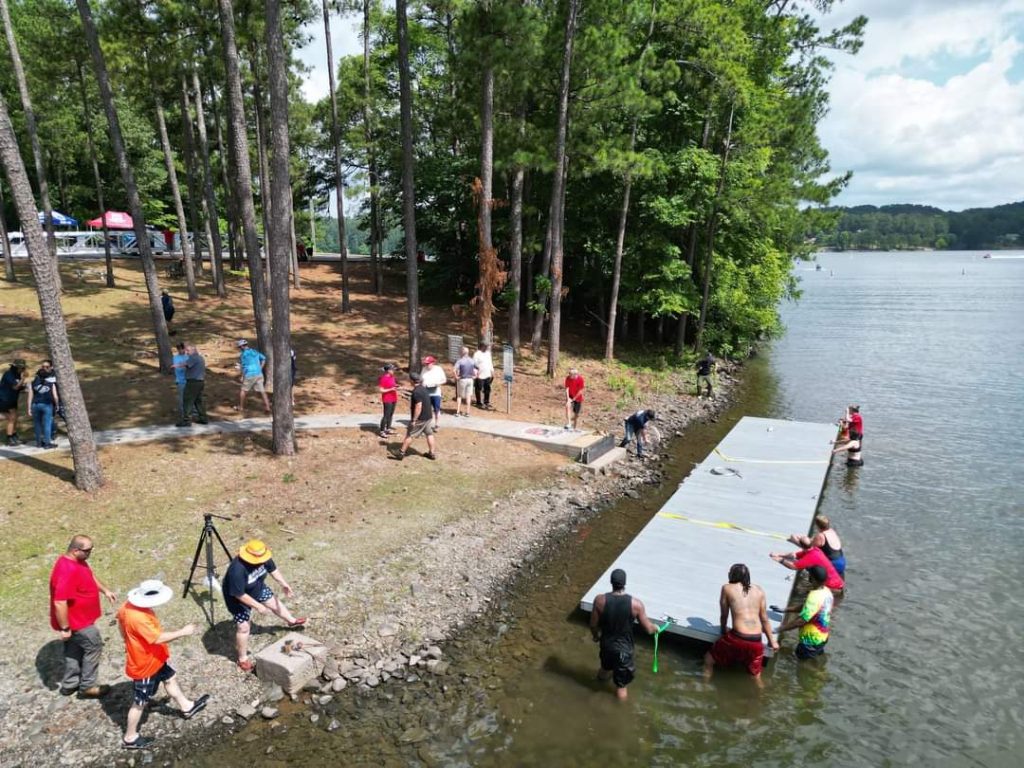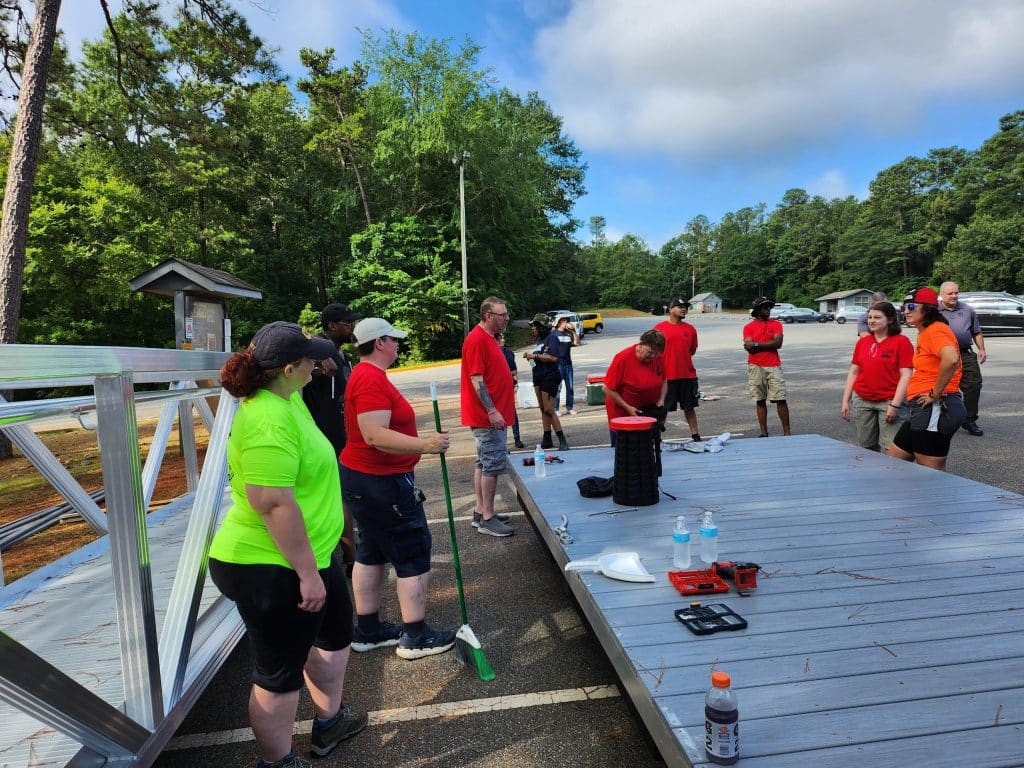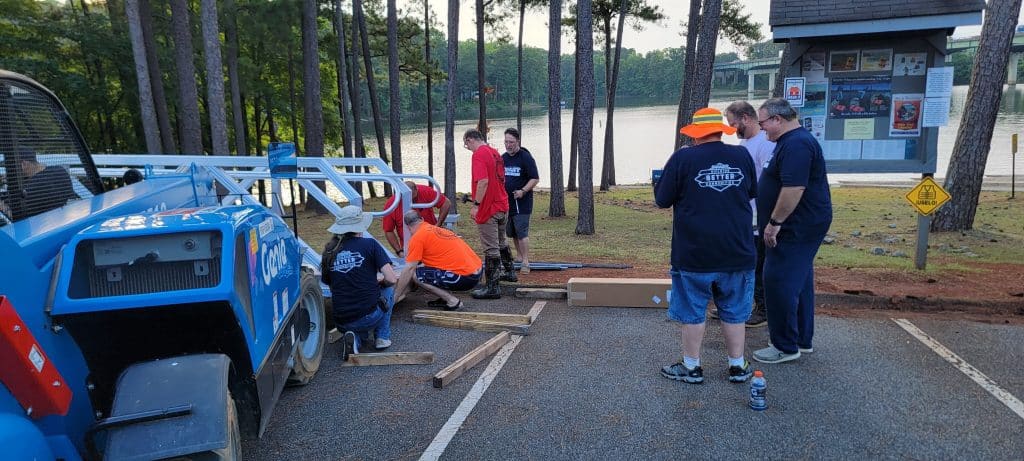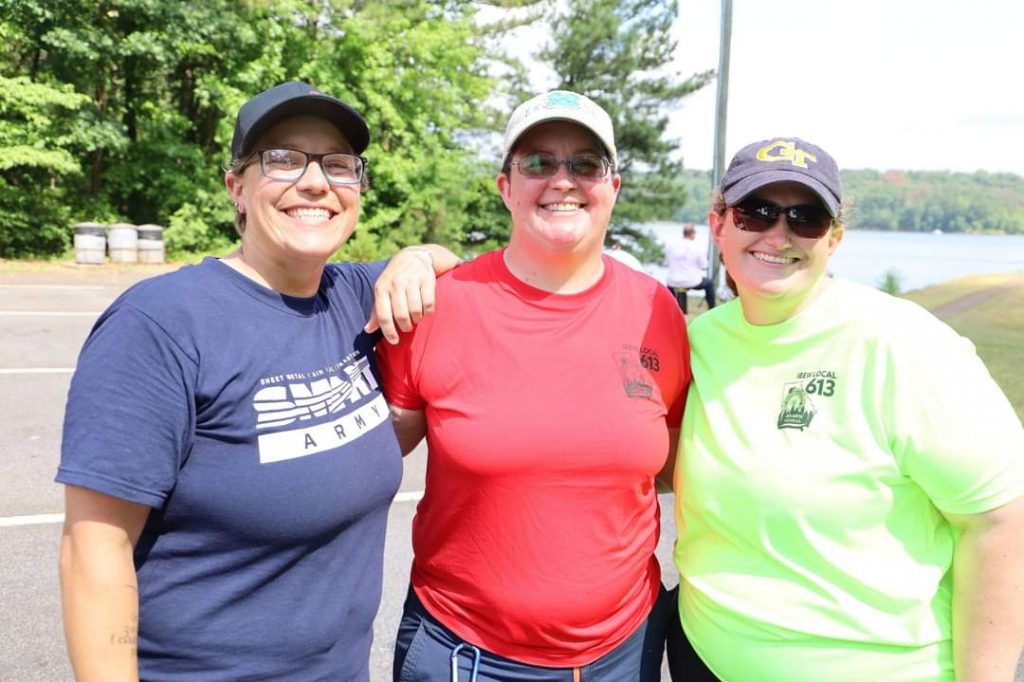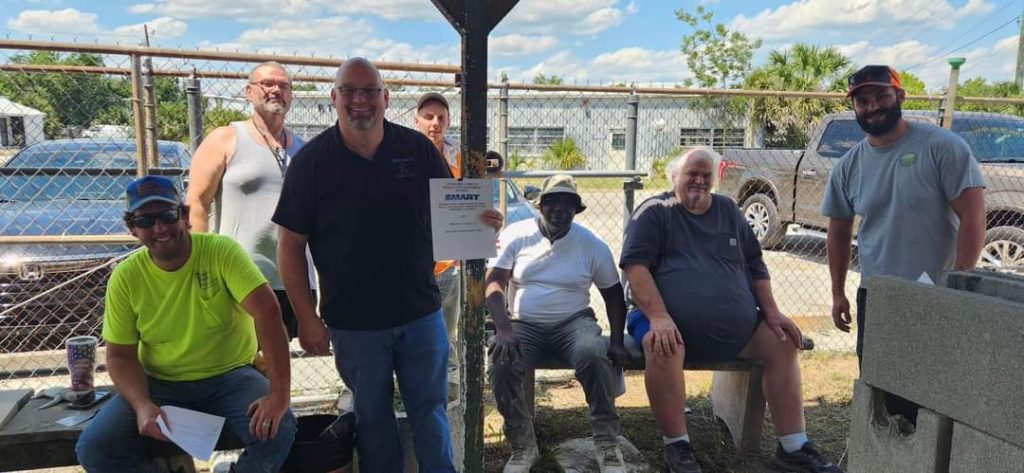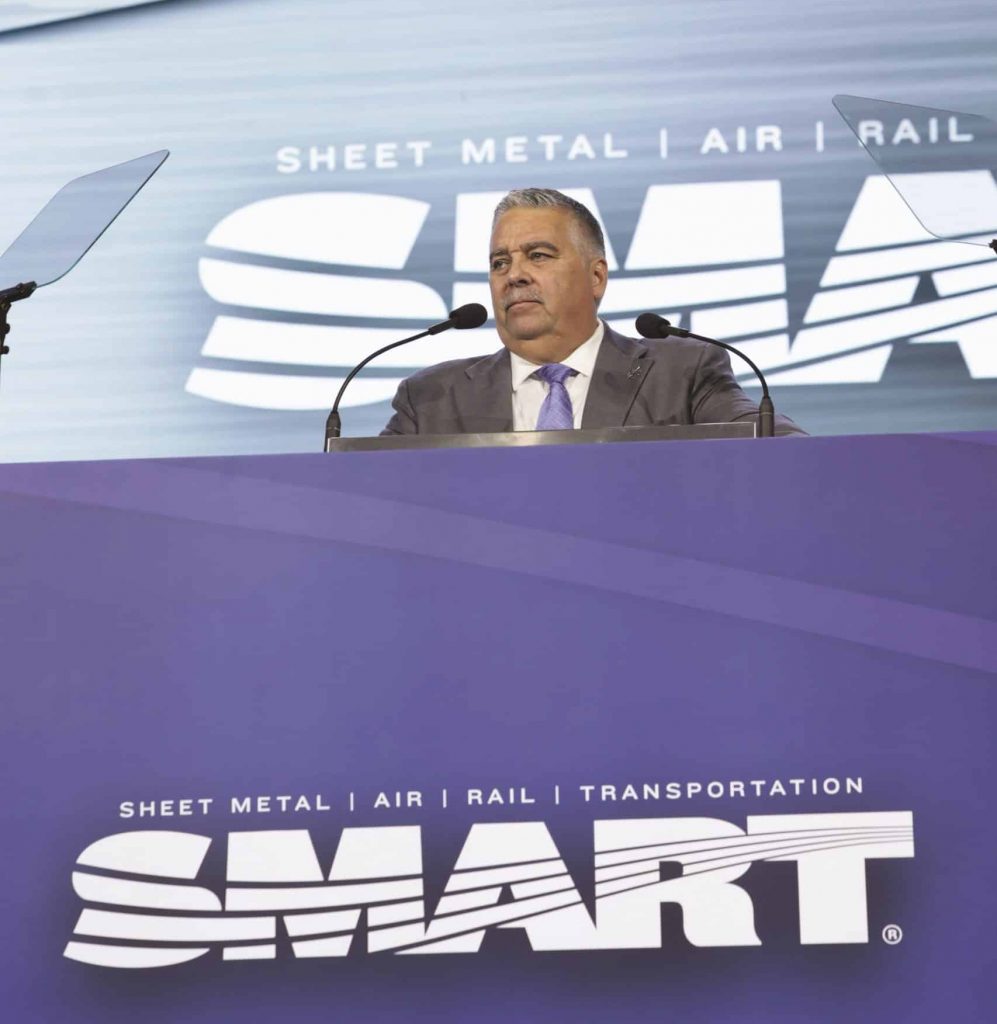
GP Coleman tells delegates: “We’re not done.”
General President Michael Coleman kicked off the Third SMART General Convention on August 12, 2024, at Caesars Forum in Las Vegas, Nev. In a nod to the convention theme — “Challenge met. But we’re not done.” — Coleman celebrated our union’s fighting spirit and called on delegates to keep up the good work on behalf of the members.
Coleman began by paying tribute to the work of past delegates and leaders, whose trailblazing actions brought two great unions — the United Transportation Union and the Sheet Metal Workers’ International Association — together in 2014.
“Today, we see the fruits of our predecessors’ hard work. Today, we are a strong union. Today, we are a forward-thinking union. And today, we are a united union,” he said.
He also looked back on the last five years — some of the most extraordinary and eventful that our two nations, let alone our union, have ever faced.
Sheet metal locals were confronted with a potentially devastating attack on union apprenticeships when the Trump administration proposed its anti-worker Industry-Recognized Apprenticeship Programs (IRAPs) rule. Meanwhile, the transportation industry faced an anti-worker administration that — among other things — conducted an all-out offensive on freight railroaders, withdrawing a proposed federal two-person crew rule and attempting to pre-empt state 2PC laws. On top of that, there was the 2020 United States election, pitting a stridently pro-worker challenger against an anti-worker incumbent, plus provincial battles against anti-labour laws in Canada. Not to mention, Coleman added, the world-altering COVID-19 pandemic.
“But we not only met those challenges, we exceeded all expectations,” he declared. “It took all of us. Rowing in the same direction. As General President Sellers used to say, pulling on the same rope. Working together as ONE UNION.”
SMART members mobilized to defeat the IRAPs initiative. We elected pro-union legislators who passed transformative laws that saved union pensions, created union sheet metal jobs, funded transportation infrastructure and gave Canadian members the ability to more effectively travel for work. We staffed megaprojects that spurred incredible growth at local unions across North America. And we finally won a two-person freight train crew regulation, putting rail safety and union jobs ahead of shareholder greed.
We achieved all of that, Coleman told delegates, because we know our “why” — our reason for doing what we do. That “why” is each other: the members of this great union. And it’s because of that “why” that we aren’t finished winning for SMART members across North America.
“General President Emeritus Sellers set us up for this moment. And we MUST seize it,” Coleman said.
Whether it’s legislation that protects our bus and transit members from assaults, or aggressive organizing to staff megaprojects, handle manufacturing demands and ensure a just transition to a green economy, Coleman emphasized the importance of keeping SMART members’ future in mind as, collectively, the convention body mapped the direction our organization will take for the next five years.
SMART is resurgent, Coleman continued. Now, we need to seize this moment. Because, make no mistake, he said: Our enemies are ruthless, and they won’t stop attacking SMART members.
“Think about why they hate us,” Coleman said. “Think about what crime they think we commit. They hate us because we fight for safety in the workplace. They hate us because we fight for the ability to live and raise our families with dignity. They hate us because we fight for the ability to retire with dignity. And when it comes time to leave this place, we fight for the ability to do that with dignity.”
“It is going to be a fight,” he told delegates. “A fight that we didn’t choose. But if it is a fight they want, it is a fight they are going to get. But this time, we will tell them when the fight is over.”
GST Daniel asks delegates: “How will we be remembered?”
SMART General Secretary-Treasurer John Daniel knows well the challenges faced by union workers across North America — over the last five years, and over the last several decades.
“I stand before you not just as your SMART general secretary-treasurer, but as a fellow worker — one who has walked the same paths, faced the same struggles and fought the same battles,” he told attendees.
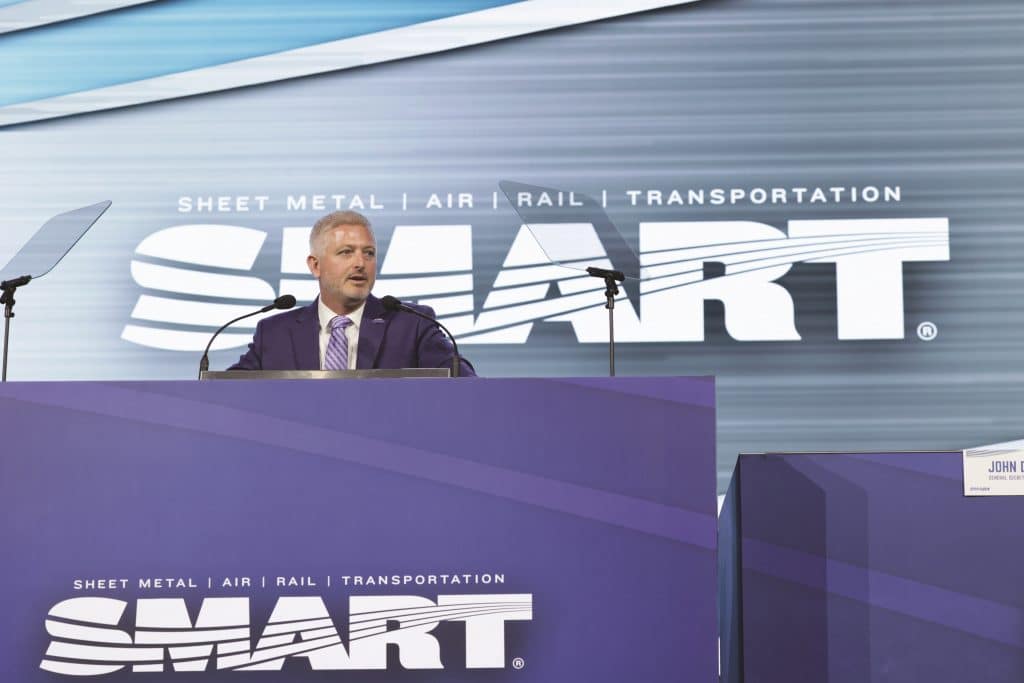
Daniel was there when the railroads sued to pre-empt Illinois’ two-person crew law, he explained. He was Local 265 business manager when the COVID-19 pandemic hit, shutting everything down and casting the world into total chaos.
“But I can say from firsthand experience, those challenges didn’t stop us in Illinois. And I know it didn’t stop anyone in this room,” he said.
SMART Canada has worked hard to win jobs and strong labour standards in the transition to a green economy up north, representing workers in not only sheet metal but roofing and various production sectors. Meanwhile, internal organizing and a focus on training have helped the Transportation Division both organize and retain members in the face of adverse conditions, while investments in recruitment and retention will help SMART sustain its growth.
The financial health of the organization is stellar, Daniel said. And on the back of megaprojects and strong representation across sheet metal and transportation, SMART’s membership has increased from a little over 203,000 to 230,000.
“Now, it is our time to decide who we are,” he declared.
Diversity in the production and bus industries provides a model for SMART to follow as we strengthen our union through organizing and inclusion. We need to keep reaching out to people of all backgrounds in every community, Daniel said, and ensure that anyone who carries a dues receipt, union card or pink ticket gets the representation they deserve.
He also argued that SMART needs to continue investing in ourselves if we want to build on the success we have achieved. Subsidized organizers, legislative staff and programs aimed at recruiting and retaining members have been key to recent victories, Daniel told attendees — and such investment needs to continue.
DOT secretary headlines day one of SMART General Convention
U.S. Department of Transportation Secretary Pete Buttigieg had a very specific message when he spoke at SMART’s Third General Convention:
“Union jobs change the trajectory of generations.”
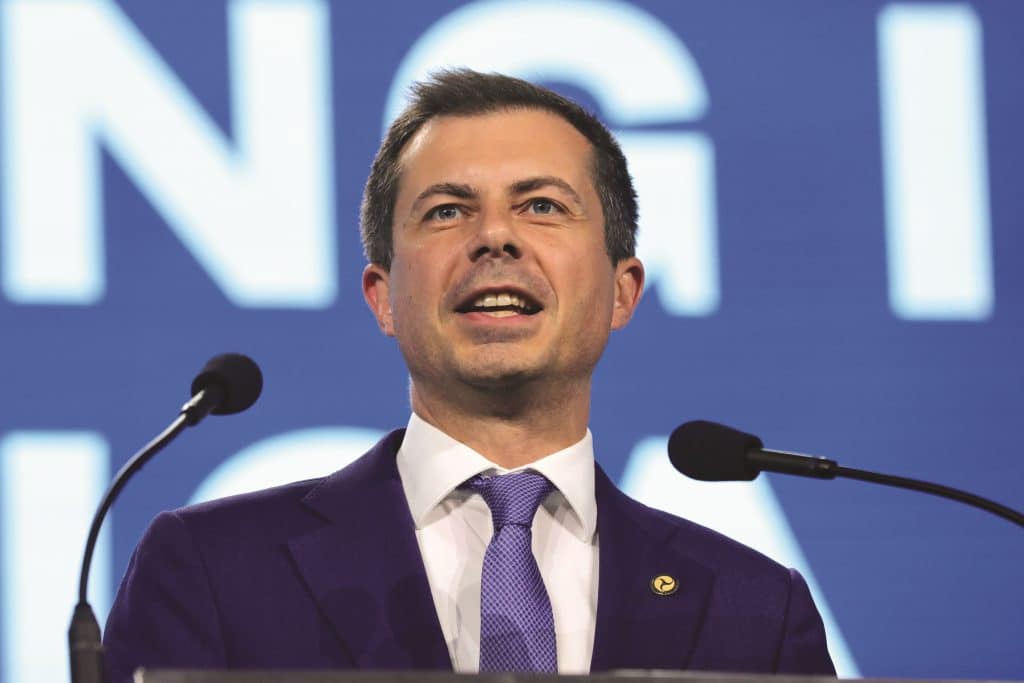
Buttigieg received a warm welcome from SMART delegates, and he matched their enthusiasm with an exciting message that the continued success of America is tied directly to empowering our union workforce. He spoke in detail about the megaprojects he and the Biden-Harris administration have put in place in every state in the country that are keeping our sheet metal members working. On the transportation side, he discussed the Federal Railroad Administration regulation enacted this spring mandating two-person crews on freight trains across the U. S., as well as the new Brightline West high-speed rail project.
The project links Las Vegas, Nevada, to Los Angeles, California. It will provide sheet metal work for building and maintaining the tracks, stations and infrastructure, and bring jobs to the TD side with SMART crews operating the trains.
Speaking directly to SMART-TD’s bus operators, Buttigieg pointed out that one of the things he is proud of in his three-plus years at the DOT is his administration’s work with SMART and the Federal Transit Administration to finalize a rule forming safety committees on bus properties around the country. He specified that our bus operators will be on these safety committees and that they will control the safety programs that come out of them.
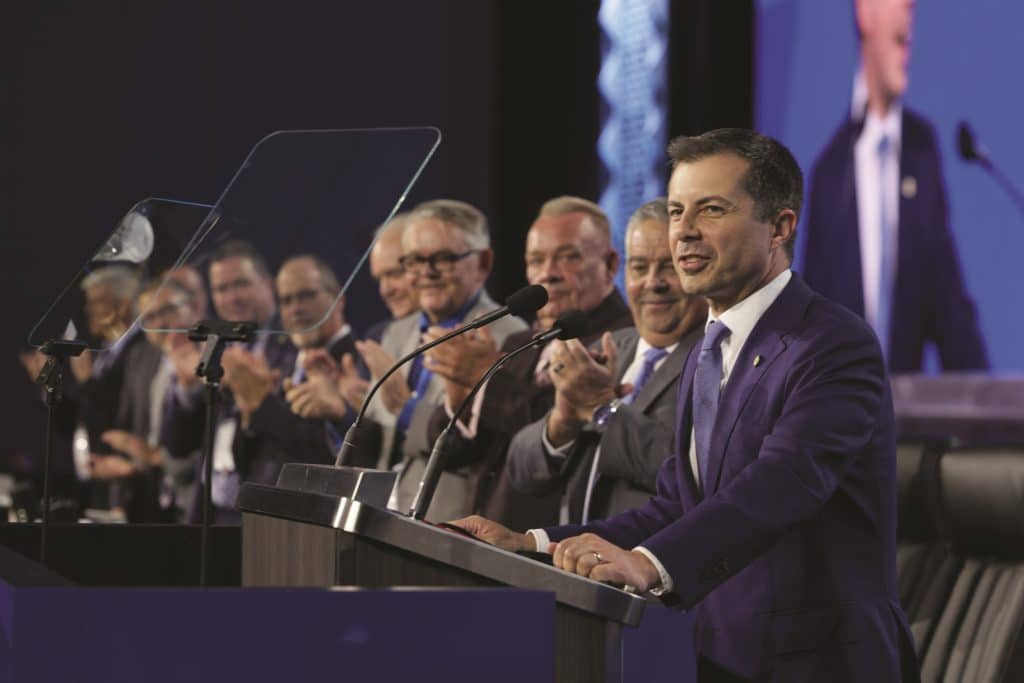
But he and the Biden-Harris administration could not have accomplished these things on their own. He gestured to the delegates on the convention floor: “You drove that! That is what the power of organizing can do!”
Union jobs and SMART membership not only “change the trajectory of generations,” but also empower each of us to “shape a future your kids can be proud of,” he said.
AFL-CIO President Shuler rallies delegates to seize this moment
AFL-CIO President Liz Shuler gave delegates a rousing speech that connected SMART members’ fights to the ongoing resurgence of the labor movement, telling members and leaders:
“Whether you’re a sheet metal worker, a bus operator, a service technician, a railroad engineer, a sign worker, a welder, a production employee … if you’re a part of this union, North America does not work without you.”
In her remarks, Shuler discussed the still-enormous fight that working people face across the United States, recounting the experiences of workers struggling for dignity and living wages — and contrasting those experiences with the exorbitant payrolls of America’s executive class. Those executives, she explained, are the people who stand to benefit if Donald Trump gets reelected and implements his Project 2025 agenda.
But thanks to the labor movement, Shuler said, workers across the U.S. are seeing that another way exists. Specifically shouting out the work and achievements of Local 435 in Gainesville, Florida, TD Local 1704 in Kansas City and Local 480 in Faribault, Minn. — plus victories at the national level, like the federal two-person freight train crew regulation, the work of the SMART Women’s Committee and the BE4ALL Rapid Response Protocol — she praised SMART’s work to empower the working class in the face of profit-flation and corporate greed.
“You are setting the standard,” she declared.
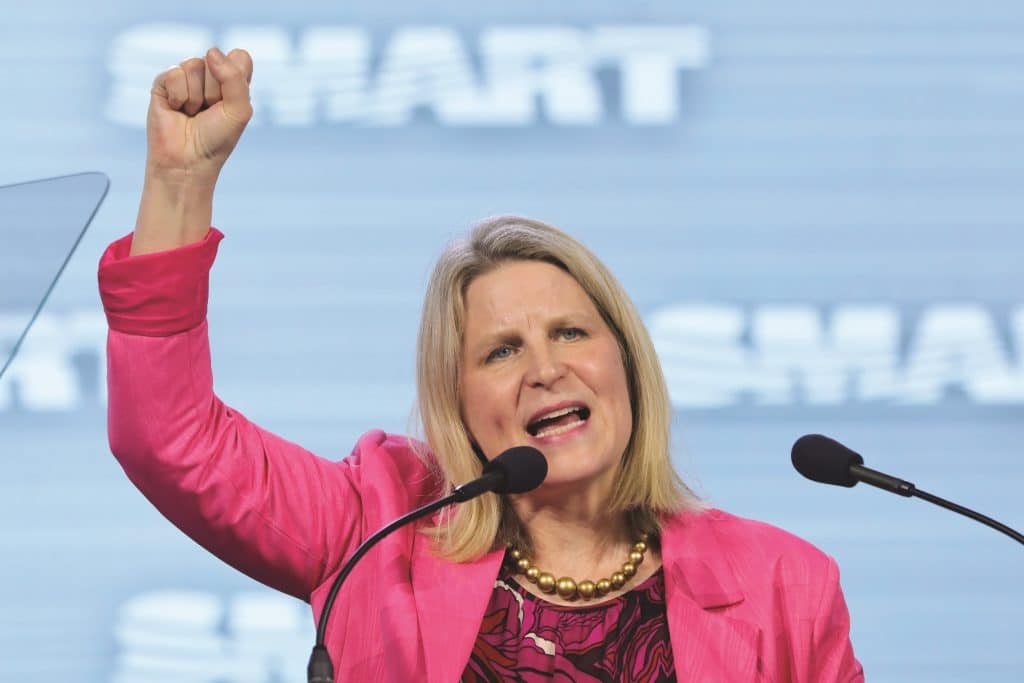
Shuler ended with a request: As November approaches, delegates, officers, families and people across the labor movement need to hit the jobsite, the phone banks and the doors to spread the word about what’s at stake in this presidential election.
“We can be the ones who make history,” Shuler concluded. “We have the momentum. … Are you ready? Let’s do this.”
Horsford to delegates: “Las Vegas is a union town”
Nevada Congressman Steven Horsford took the podium at the Third SMART General Convention on Monday, Aug. 12. Horsford, who represents SMART members and working families in Nevada’s Fourth Congressional District and is also the co-chair and founder of the Congressional Labor Caucus, received a warm welcome for his stellar support for organized labor while in office.
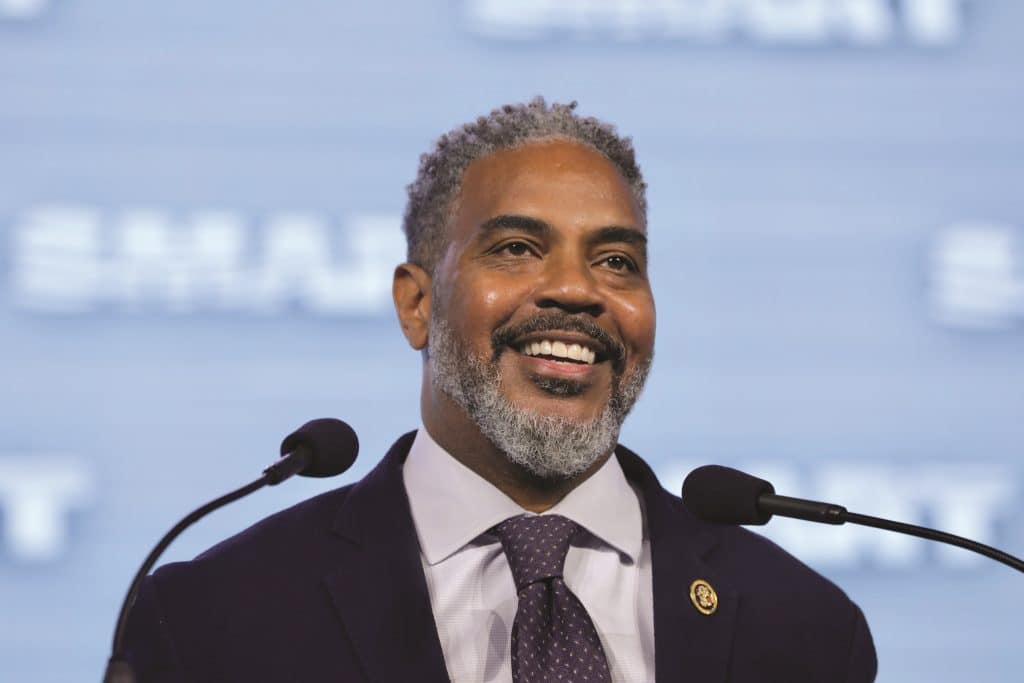
Horsford voted for the American Rescue Plan, the Bipartisan Infrastructure Law, the CHIPS and Science Act and the Inflation Reduction Act, a package of legislation that saved SMART members’ pensions; created jobs building the United States’ critical infrastructure; invested in American railroads and public transit; put union sheet metal workers on clean energy jobs and much more. He also worked to fund the Brightline West high-speed rail line, creating work for SMART sheet metal and railroad workers, and has helped local unions in Nevada and beyond win funding for their training centers.
That said, he went on, we’re not done. Horsford pledged to continue working with SMART on a variety of priorities, including the reauthorization of the National Apprenticeship Act.
“I look forward to working with you to advance this bill, and address many of your other priorities,” he concluded.
Harris details ITI’s efforts to boost training
International Training Institute Administrator Michael Harris provided delegates with an overview of the ITI’s various initiatives to boost and enhance training at local unions and regional councils across SMART — grants, training programs and curricula, and much more. He also updated the audience on the ITI’s ongoing work to continue meeting the challenges of the future, including a JATC full-time coordinator subsidy program.
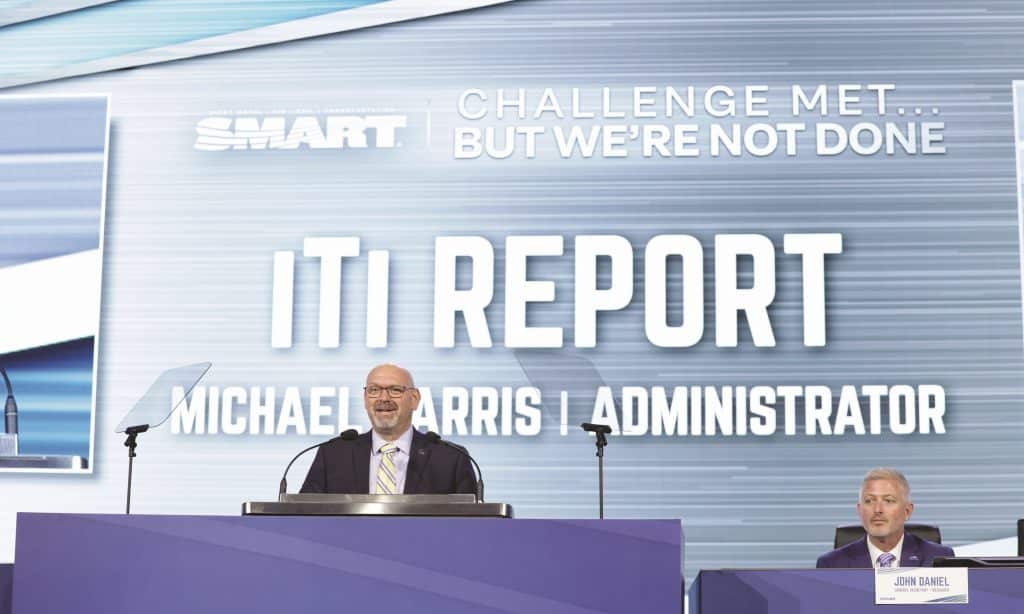
Nev. AFL-CIO’s Martinez fires up crowd
Nevada AFL-CIO Executive Secretary-Treasurer Susie Martinez fired up SMART convention delegates with her remarks, which touched on her history as a pro-labor legislator who helped pass indoor air quality legislation and a state two-person crew law.
Martinez acknowledged the large role SMART played in helping her pass Nevada’s two-person crew bill in 2019, as well as the state’s AB 927, the Clean Air Act, in 2021.
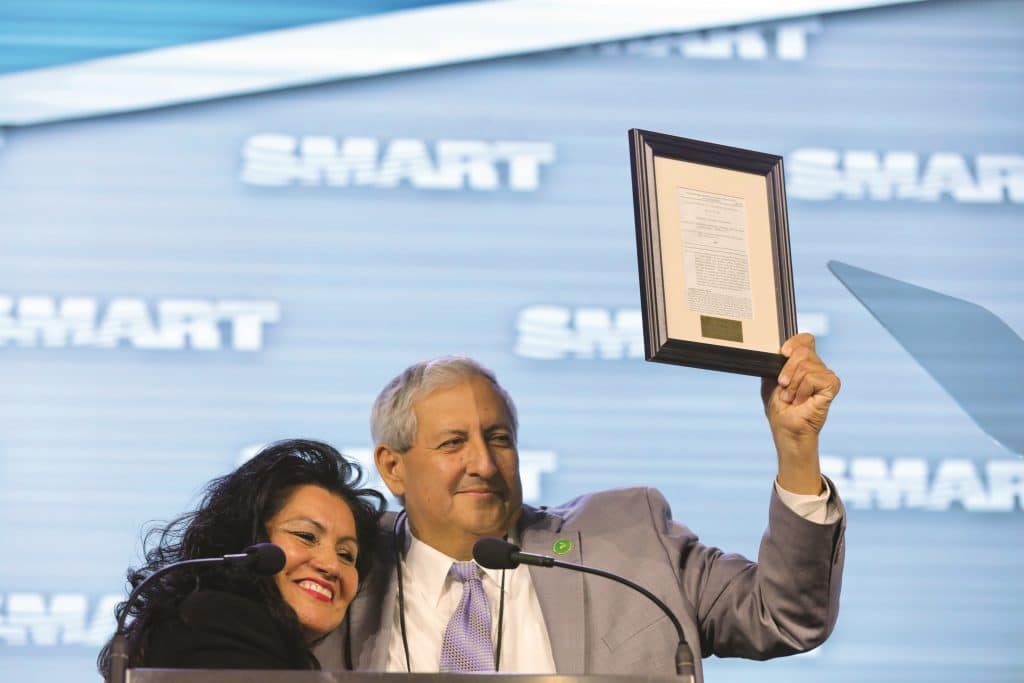
A longstanding member of Teamsters Local 986, she described the incredible amount of assistance she received from SMART Local 88’s Al Lopez in her pursuit of the law.
In Martinez’s words, “Al was in my office every day. He was there by my side. The reason I’m having Al come up here is so I can say that we don’t do this alone.”
She told SMART’s delegates she was later given an award from AFL-CIO leadership known as The Best Bill Ever award for passing the Clean Air Act.
To Brother Lopez’s surprise, Martinez announced that the recognition she received for passing “their bill” was just as much an accomplishment for Al and SMART Local 88 as it was for her. She then presented Brother Lopez with the plaque she had been awarded, saying she wanted him to have it in recognition of what Local 88, with Lopez’s determination, had done to realize this important legislation.
